All reports
Hemophilia
·
Feb 26, 2025
A guide to nutrition for patients with hemophilia
This guide provides practical advice and information to help you make informed choices about your diet and manage your symptoms effectively
Reports are in beta and continually improving. They are not a substitute for professional medical advice. Please contact us to give feedback.
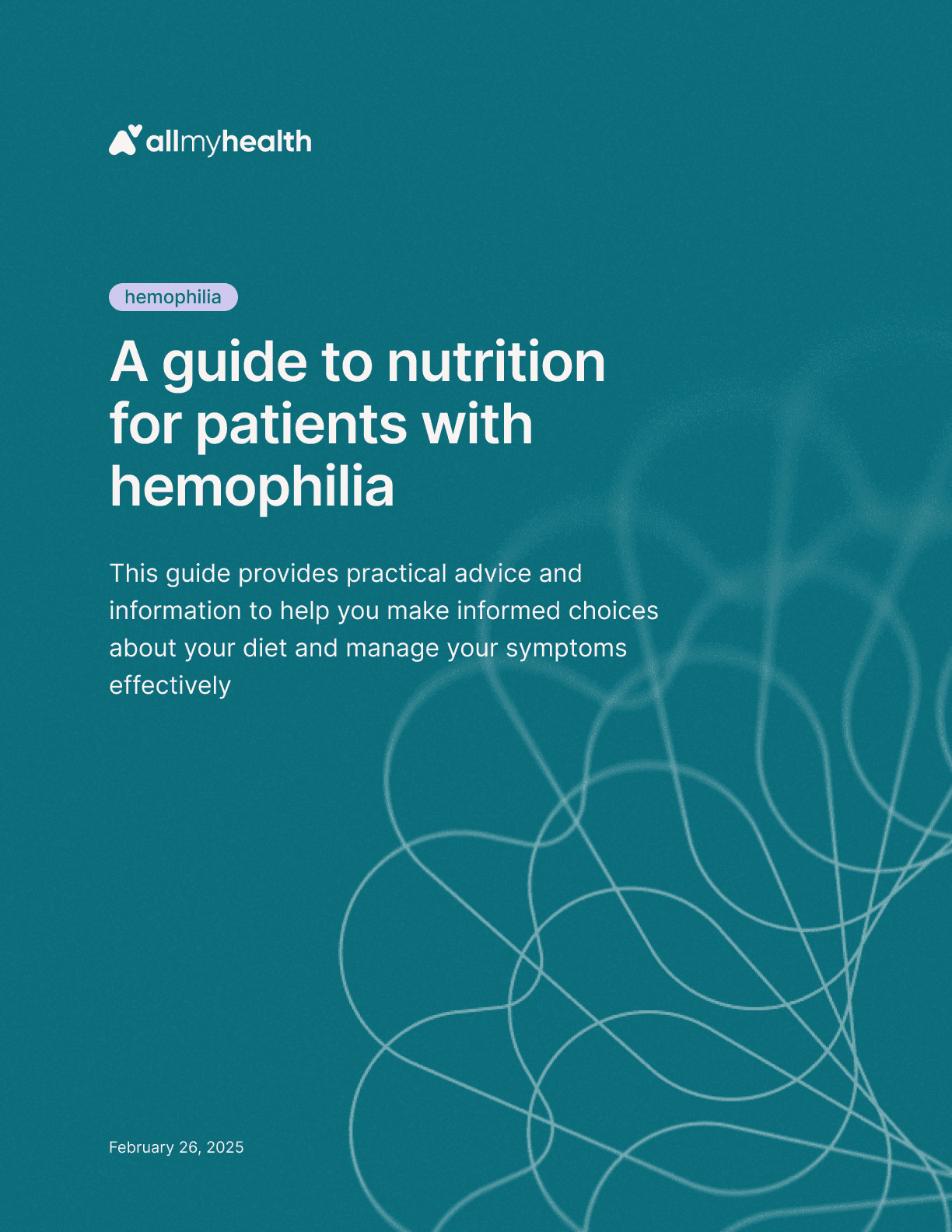
Stay informed
This report was published in our weekly newsletter and on our community page. Follow to stay up to date with the latest news and research relevant to your condition.
Listen to the audio version
Introduction
Hemophilia is a rare genetic disorder that prevents your blood from clotting properly [1]. This can lead to excessive bleeding after injuries or even spontaneous bleeding within the body, especially in the joints. Proper management, including a healthy lifestyle and good nutrition, can significantly improve your quality of life.
This guide focuses on the importance of nutrition in managing hemophilia and provides practical tips and information to help you make informed choices about your diet.
Understanding hemophilia and Its nutritional implications
Living with hemophilia presents unique nutritional challenges. It's not just about eating a balanced diet; it's about understanding how the condition itself can influence your body's needs and how you can use nutrition to actively manage your health.
One of the key ways hemophilia can impact your nutritional needs is through blood loss. Frequent bleeding episodes can lead to iron deficiency, as iron is an essential component of red blood cells, and these cells are lost during bleeds [2]. This can result in fatigue, weakness, and other complications.
Furthermore, joint bleeds, a common occurrence in hemophilia, can cause pain and inflammation, making it difficult to maintain a healthy weight and potentially leading to obesity [3]. Excess weight can put added strain on your joints, creating a vicious cycle: the extra weight increases the risk of bleeds, bleeds lead to inactivity, and inactivity can make it harder to maintain a healthy weight [3]. This cycle can be challenging to break, but with proper nutrition and exercise, you can regain control and improve your joint health.
It's also important to be aware that excess weight can affect the efficacy of factor VIII replacement therapy, a common treatment for hemophilia [4]. Maintaining a healthy weight is therefore not only crucial for joint health but also for ensuring that your treatment is as effective as possible.
General dietary guidelines for people with hemophilia
While there are no specific "hemophilia diets," following general healthy eating guidelines is crucial for managing the condition and improving your overall well-being [3]. These guidelines provide a framework for making informed food choices that support your body's needs and help you stay healthy.
Maintaining a healthy weight
Maintaining a healthy weight is paramount for people with hemophilia. It reduces stress on your joints, minimizes the risk of bleeding, and can even improve the effectiveness of your treatment [3].This is especially important for children with hemophilia, as they are twice as likely to be overweight as their peers [5].
Balanced diet
Focus on a balanced diet that includes a variety of fruits, vegetables, whole grains, lean protein, and low-fat dairy [3]. This provides your body with the essential nutrients it needs to function properly, maintain strong bones, and support overall health [6].
Hydration
Staying hydrated is crucial for everyone, but it's particularly important for people with hemophilia. Drinking enough water helps maintain healthy blood flow, prevents dehydration, and can help reduce joint pain and complications [7]. Aim for at least eight glasses of water per day, and consider increasing your intake based on your activity level and climate.
Limiting unhealthy fats
Reduce your intake of saturated and trans fats found in processed foods, fatty meats, and full-fat dairy [8]. These fats can contribute to weight gain, heart disease, and other health problems. Instead, choose healthy fats like those found in olive oil, avocados, nuts, and seeds. When cooking, opt for healthier methods like baking, boiling, or grilling, and use vegetable oils instead of butter or shortening [3].
Minimizing added sugar
Limit your consumption of sugary drinks, candies, and processed foods high in added sugars [9].These foods provide empty calories and can contribute to weight gain and other health issues. Be mindful of hidden sugars in seemingly healthy foods like fruit juices and smoothies [10].Even condiments and salad dressings can be surprisingly high in sugar, so use them sparingly or choose low-sugar options.
Specific nutritional needs for hemophilia patients
While a balanced diet is essential for everyone, certain nutrients are particularly important for people with hemophilia. These nutrients play specific roles in supporting your body's ability to manage bleeding, maintain strong bones, and promote overall health.
Iron
Iron is a crucial mineral for people with hemophilia. It's essential for producing hemoglobin, the protein in red blood cells that carries oxygen throughout the body [2]. Since red blood cells are lost during bleeding episodes, it's vital to replenish your iron stores through your diet.
Include iron-rich foods like lean red meat, liver, poultry, leafy green vegetables, beans, and dried fruits in your meals [2]. To enhance iron absorption, combine these foods with sources of vitamin C, such as citrus fruits, berries, and tomatoes [10]. For example, having a spinach salad with orange slices or enjoying a chicken stir-fry with bell peppers can help your body absorb more iron from these foods.
Vitamin K
Vitamin K is essential for blood clotting, a process that is impaired in hemophilia11. While it may seem counterintuitive to focus on vitamin K when you have a bleeding disorder, maintaining a consistent intake is important. Sudden changes in vitamin K levels can affect the effectiveness of clotting factor replacement therapy, a common treatment for hemophilia [7].
Good sources of vitamin K include leafy green vegetables like kale, spinach, and collard greens, as well as Brussels sprouts and cabbage. Incorporate these foods into your diet to ensure a consistent intake of vitamin K.
Protein
Protein is a building block for tissues, and it plays a vital role in repairing and maintaining muscles, which can be damaged due to bleeding episodes in hemophilia [7]. Ensuring adequate protein intake is therefore crucial for people with this condition.
Include a variety of protein sources in your diet, such as lean meats, poultry, fish, eggs, dairy products, legumes (beans, lentils, chickpeas), and tofu. These foods provide the amino acids your body needs to repair tissues and support muscle health.
Calcium and Vitamin D
Calcium and vitamin D are essential for building and maintaining strong bones. This is particularly important for people with hemophilia, who may experience joint damage and bone health issues due to recurrent bleeding into the joints [11].
Dairy products, such as milk, yogurt, and cheese, are excellent sources of calcium. Choose low-fat or fat-free options to reduce your intake of saturated fat. Leafy green vegetables, fortified foods like soy or almond milk, and certain types of beans and seafood also contribute to your calcium intake.
Vitamin D helps your body absorb calcium, so it's important to include sources of vitamin D in your diet as well. Fatty fish like salmon, fortified dairy products, and egg yolks are good sources of vitamin D.
Practical advice and meal planning tips for hemophilia patients
This section provides practical tips and strategies to help you plan your meals, make healthier choices, and incorporate the nutritional recommendations discussed earlier into your daily life.
Cooking tips
Cook at home: Preparing meals at home gives you more control over the ingredients and cooking methods, making it easier to follow a healthy diet.
Choose healthy cooking methods: Opt for baking, boiling, grilling, or steaming instead of frying to reduce your intake of unhealthy fats [3].
Use healthy oils: When cooking, use vegetable oils like olive oil, canola oil, or sunflower oil instead of butter, shortening, or higher-fat oils [3].
Smart shopping
Read food labels: Pay close attention to the nutrition information on food labels, especially the fat, sugar, and sodium content. This helps you make informed choices and avoid foods high in unhealthy ingredients.
Choose fresh ingredients: Whenever possible, opt for fresh fruits, vegetables, and lean protein sources over processed or pre-packaged foods.
Meal planning strategies
Meal prepping: Prepare meals or snacks in advance to ensure you have healthy options readily available when you're short on time. This can help you avoid unhealthy choices when you're hungry.
Portion control: Be mindful of portion sizes to avoid overeating and maintain a healthy weight. Use smaller plates and bowls, and measure out your portions to help with portion control.
Sample meal ideas
Here are some sample meal ideas that incorporate the nutritional recommendations for people with hemophilia:
Breakfast:
Greek yogurt parfait: Layer low-fat Greek yogurt with granola, nuts, and fresh fruit [13]. This provides protein, calcium, and healthy fats.
Oatmeal with nuts and fruit: Cook oats with milk or a dairy-free alternative and top with chopped nuts (such as almonds or walnuts) and fresh fruits like berries or sliced bananas [13]. Oats provide fiber, while nuts contribute healthy fats and protein.
Protein-packed smoothie: Blend together low-fat Greek yogurt, berries, a banana, and a handful of spinach. Add a scoop of protein powder for an extra protein boost [13].This smoothie is not only delicious but also rich in protein, vitamins, and antioxidants.
Lunch:
Grilled chicken salad: Combine grilled chicken breast with a variety of colorful vegetables like leafy greens, cherry tomatoes, cucumbers, and bell peppers. Top it with a light vinaigrette made with olive oil and balsamic vinegar for a nutrient-packed, low-calorie meal [13].
Quinoa and vegetable stir-fry: Stir-fry a mix of colorful vegetables (broccoli, carrots, bell peppers) with tofu or lean chicken. Add cooked quinoa and a dash of low-sodium soy sauce for a protein-rich and wholesome lunch [13].
Snacks:
Vegetable sticks with hummus: Enjoy a snack of sliced vegetables (carrots, cucumber, bell peppers) with hummus [13]. Hummus adds protein and healthy fats while vegetables contribute vitamins and minerals.
Dinner:
Salmon with quinoa and roasted vegetables: Baked or grilled salmon is an excellent source of omega-3 fatty acids. Serve it alongside quinoa and a mix of roasted vegetables like sweet potatoes, Brussels sprouts, and asparagus for a well-rounded dinner [13].
Vegetarian lentil soup: Prepare a hearty lentil soup with vegetables like carrots, celery, and spinach [13]. Lentils are rich in iron and protein, making this a nutritious and comforting option.
Dessert:
Mixed berry parfait: Layer mixed berries with low-fat yogurt or cottage cheese for a delicious and antioxidant-rich dessert [13]. It's a sweet treat that also provides vitamins and minerals.
Dark chocolate and nut clusters: Indulge in a small serving of dark chocolate paired with mixed nuts [13]. Dark chocolate contains antioxidants, and nuts provide healthy fats and protein.
Important Note: When including oysters in your diet, it's crucial to cook them thoroughly to avoid potential bacterial infection [5]. Raw oysters can contain harmful bacteria that can cause food poisoning.
Remember to adjust these meal ideas to your preferences, dietary needs, and any advice you receive from your healthcare professional.
Foods and substances to be mindful of
While there are no strict "forbidden foods" for people with hemophilia, certain foods and substances can pose challenges to managing the condition or may interact with your medications. It's essential to be aware of these and make informed choices.
Alcohol
Alcohol can thin the blood and may interfere with blood clotting [5]. If you have hemophilia, it's generally recommended to limit or avoid alcohol consumption, especially if you have severe hemophilia or struggle to manage bleeding episodes. Alcohol can also increase the risk of accidents, which can lead to injuries and bleeding.
High-fat fast food
Fast food is often high in calories, unhealthy fats, sodium, and sugar, while lacking in essential nutrients [5]. Frequent consumption of fast food can contribute to weight gain and other health problems, which can exacerbate hemophilia symptoms. If you do choose to eat fast food, opt for healthier options, such as salads with grilled chicken or lean protein sources, and choose smaller portions.
Certain supplements
Some supplements, such as high-dose vitamin E, fish oil, garlic, and gingko biloba, may have blood-thinning effects or interact with medications used to manage hemophilia [7]. Always discuss any supplements you're considering with your healthcare provider before taking them.
Importance of working with a healthcare professional
It's essential to work with a registered dietitian or other healthcare professional for personalized nutrition guidance. They can help you:
Assess your individual nutritional needs.
Develop a personalized meal plan.
Manage treatment side effects that affect your eating.
Monitor your nutritional status and make adjustments as needed.
Provide education and support.
Reduce the risk of treatment toxicity.
Conclusion
Nutrition is a cornerstone of managing hemophilia and living a healthier life with the condition. By understanding the nutritional implications of hemophilia, following a balanced diet, maintaining a healthy weight, and being mindful of specific nutritional needs, you can actively support your body's ability to cope with bleeding episodes, maintain strong bones, and enhance your overall well-being.
Remember that hemophilia can create a cyclical impact on nutrition, where bleeds lead to inactivity, which can contribute to weight gain and further increase the risk of bleeds. Breaking this cycle requires a proactive approach to nutrition and a commitment to a healthy lifestyle.
It's crucial to work closely with your healthcare team, including your doctor and a registered dietitian, to develop a personalized nutrition plan that addresses your individual needs and helps you live a healthier, more fulfilling life with hemophilia. Don't hesitate to reach out to your healthcare provider to discuss your nutrition plan and any concerns you may have.
References
1. Hemophilia - StatPearls - NCBI Bookshelf
https://www.ncbi.nlm.nih.gov/books/NBK551607/
2. Haemophilia: five things to eat and five things to avoid
https://www.bjh.be/haemophilia-five-things-to-eat-and-five-things-to-avoid/#:~:text=Maintaining%20iron%20levels%20is%20particularly,beans%2C%20grains%2C%20and%20raisins.
3. Healthy Eating with Hemophilia and Other Bleeding Disorders | CVS Specialty
https://www.cvsspecialty.com/resource-center/bleeding-disorders/healthy-eating-with-hemophilia.html
4. HEMOPHILIA: WHY IT IS IMPORTANT TO FOLLOW A PROPER DIET | Eight Factor
http://www.eightfactor.com/en/insight/hemophilia-why-it-is-important-to-follow-a-proper-diet/
5. Hemophilia Diet: 3 Foods To Eat and 2 To Avoid | MyHemophiliaTeam
https://www.myhemophiliateam.com/resources/hemophilia-diet-foods-to-eat-and-to-avoid
6. Evaluation Of Nutritional Status Among Adult Hemophilia Patients Enrolled In European Gaza Hospital In Gaza Strip, Palestine - MaplesPub
https://maplespub.com/article/Evaluation-of-Nutritional-Status-among-Adult-Hemophilia-patients-enrolled-in-European-Gaza-hospital-in-Gaza-strip-Palestine
7. Nutrition and Hemophilia: What to Eat and What to Avoid - Mylyfe
https://mylyfehealth.com/alternative-health/nutrition-and-hemophilia-what-to-eat-and-what-to-avoid/
8. Foods To Avoid With Hemophilia
https://integrishealth.org/resources/on-your-health/2022/april/foods-to-avoid-with-hemophilia#:~:text=High%2Dfat%20foods&text=In%20turn%2C%20this%20can%20make,fatty%20proteins%20and%20processed%20foods.
9. What Foods to Avoid if One has Hemophilia
https://www.sriramakrishnahospital.com/blog/haematology/what-foods-to-avoid-if-one-has-hemophilia/
10. Haemophilia: five things to eat and five things to avoid - BJH
https://www.bjh.be/haemophilia-five-things-to-eat-and-five-things-to-avoid/
11. Best Diet for Hemophilia - AmeriPharma® Specialty Care
https://ameripharmaspecialty.com/hemophilia/best-diet-for-hemophilia/
12. Hemophilia A- diet and Nutrition tips - Paras Hospital
https://www.parashospitals.com/blogs/hemophilia-a-diet-and-nutrition-tips
13. Hemophilia Nutrition for Management - Mylyfe
https://mylyfehealth.com/hemophilia/hemophilia-nutrition-for-management/

Gaucher disease
·
Inclusion of Gaucher disease in newborn screening panels across the U.S.
Apr 9, 2025

Hemophilia
·
Qfitlia: A breakthrough in hemophilia treatment
Apr 3, 2025

Multiple myeloma
·
Navigating clinical trials in multiple myeloma
Apr 2, 2025

Gene and cell therapy
·
An introduction to cell therapy
Mar 25, 2025

Gene and cell therapy
·
An introduction to gene therapy
Mar 19, 2025
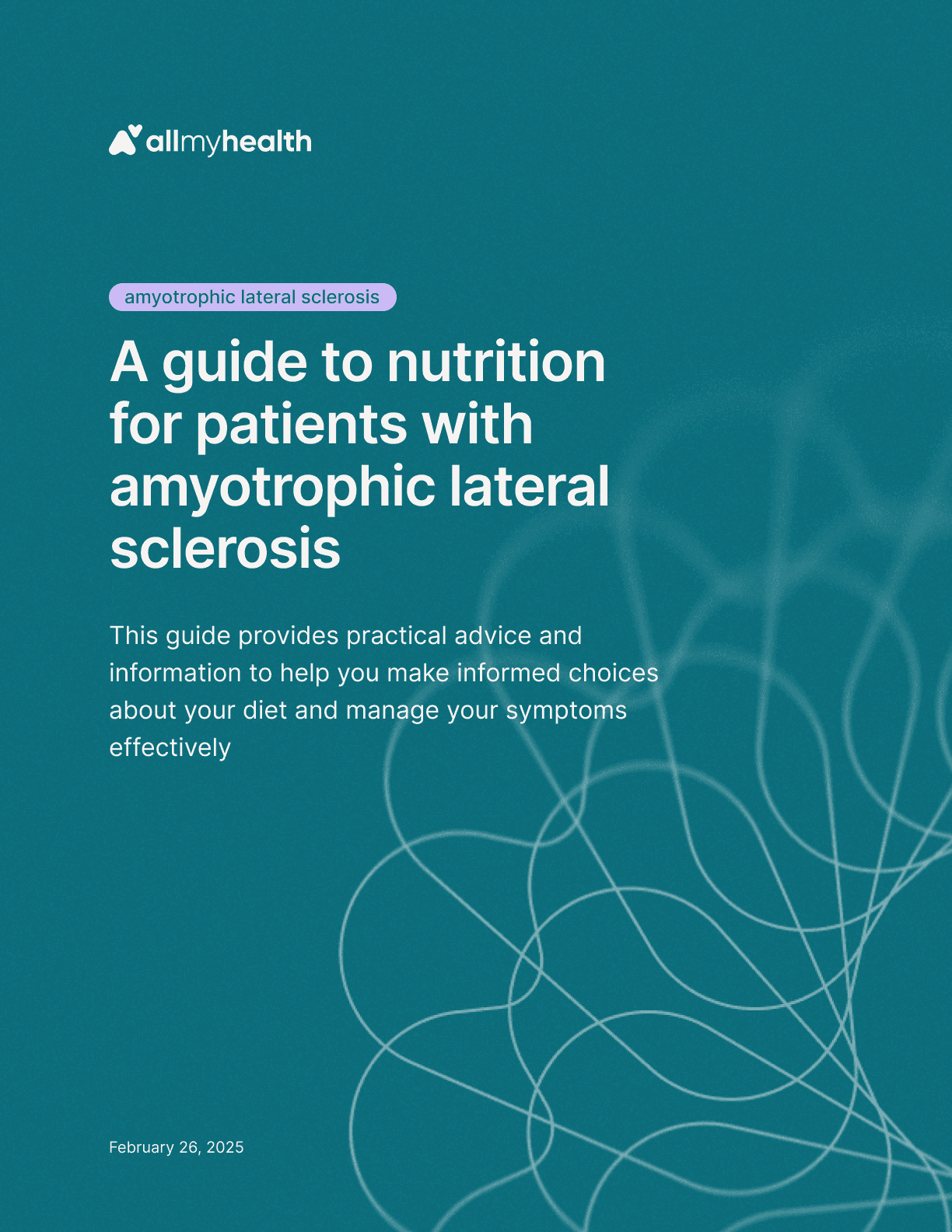
Amyotrophic lateral sclerosis
·
A guide to nutrition for patients with amyotrophic lateral sclerosis
Feb 26, 2025
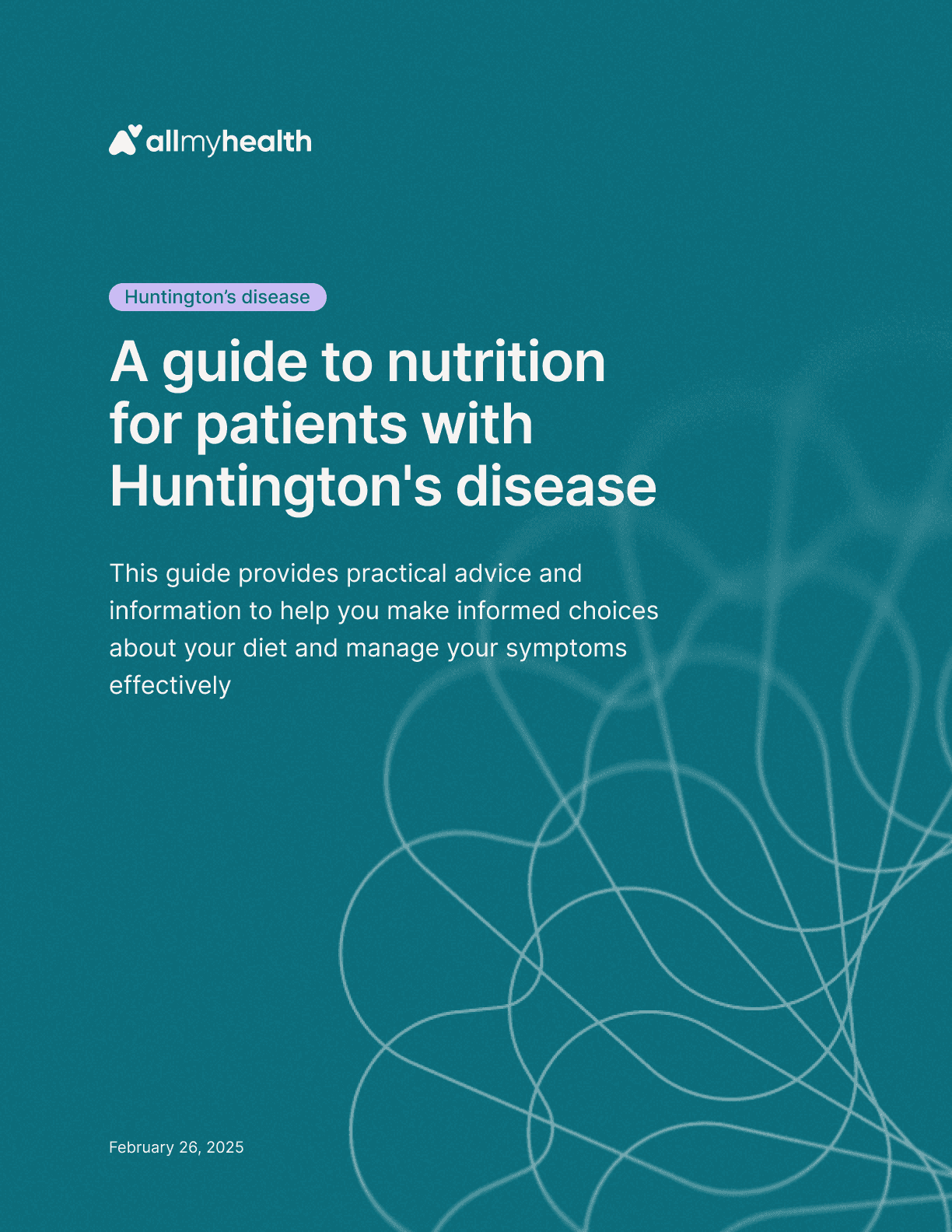
Huntington's disease
·
A guide to nutrition for patients with Huntington's disease
Feb 26, 2025

Spinal muscular atrophy
·
A guide to nutrition for patients with spinal muscular atrophy
Feb 26, 2025
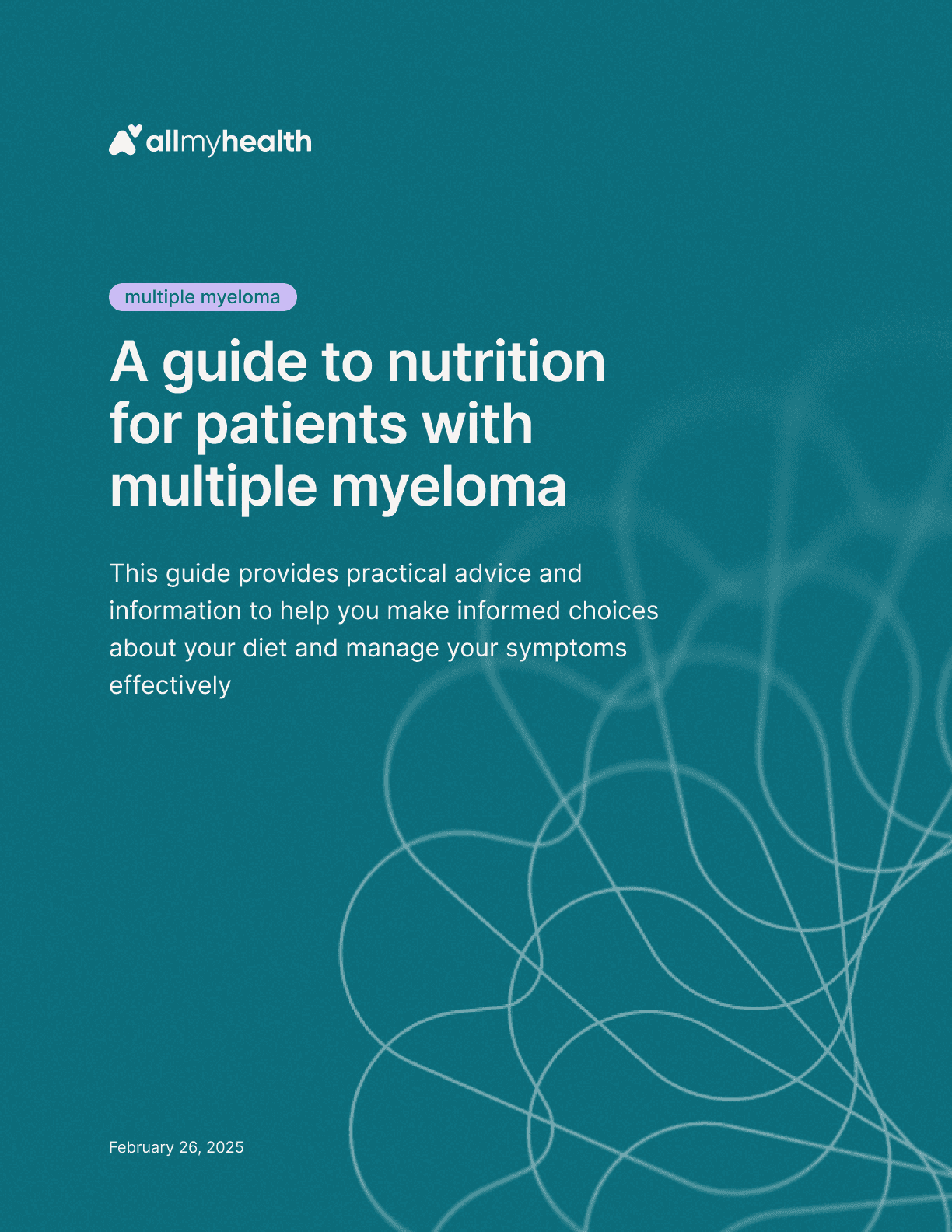
Multiple myeloma
·
A guide to nutrition for patients with multiple myeloma
Feb 26, 2025
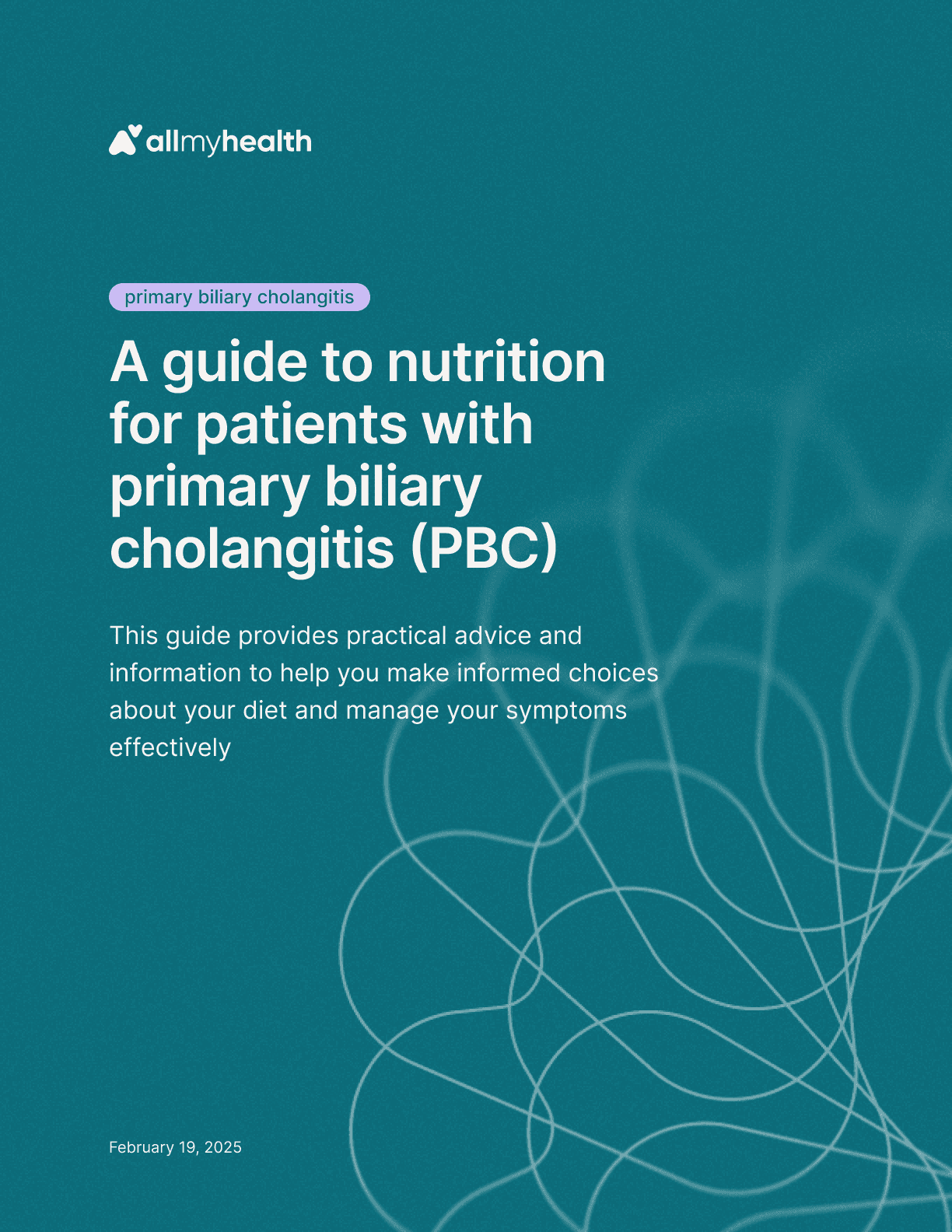
Primary biliary cholangitis
·
A guide to nutrition for patients with primary biliary cholangitis (PBC)
Feb 19, 2025
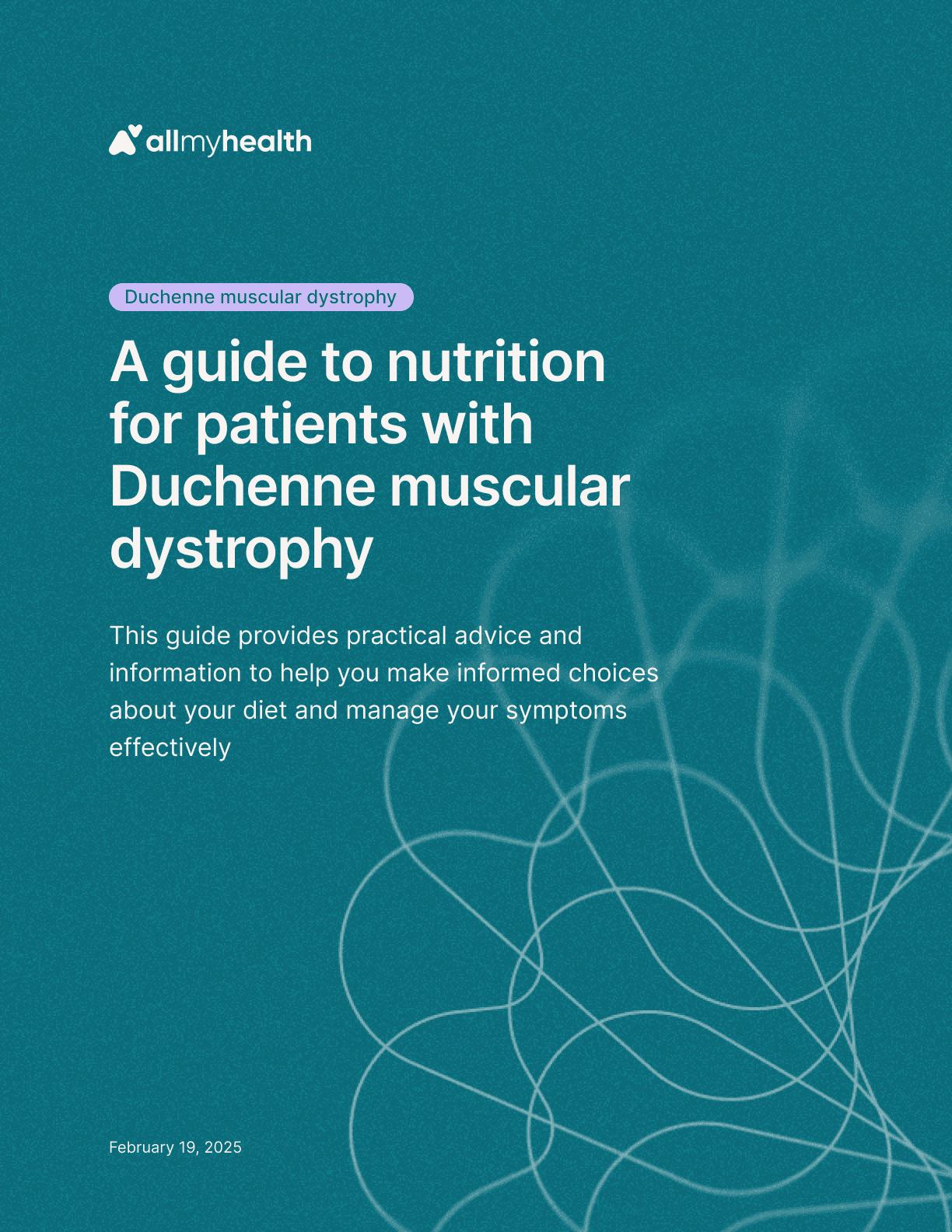
Duchenne muscular dystrophy
·
A guide to nutrition for patients with Duchenne muscular dystrophy
Feb 19, 2025
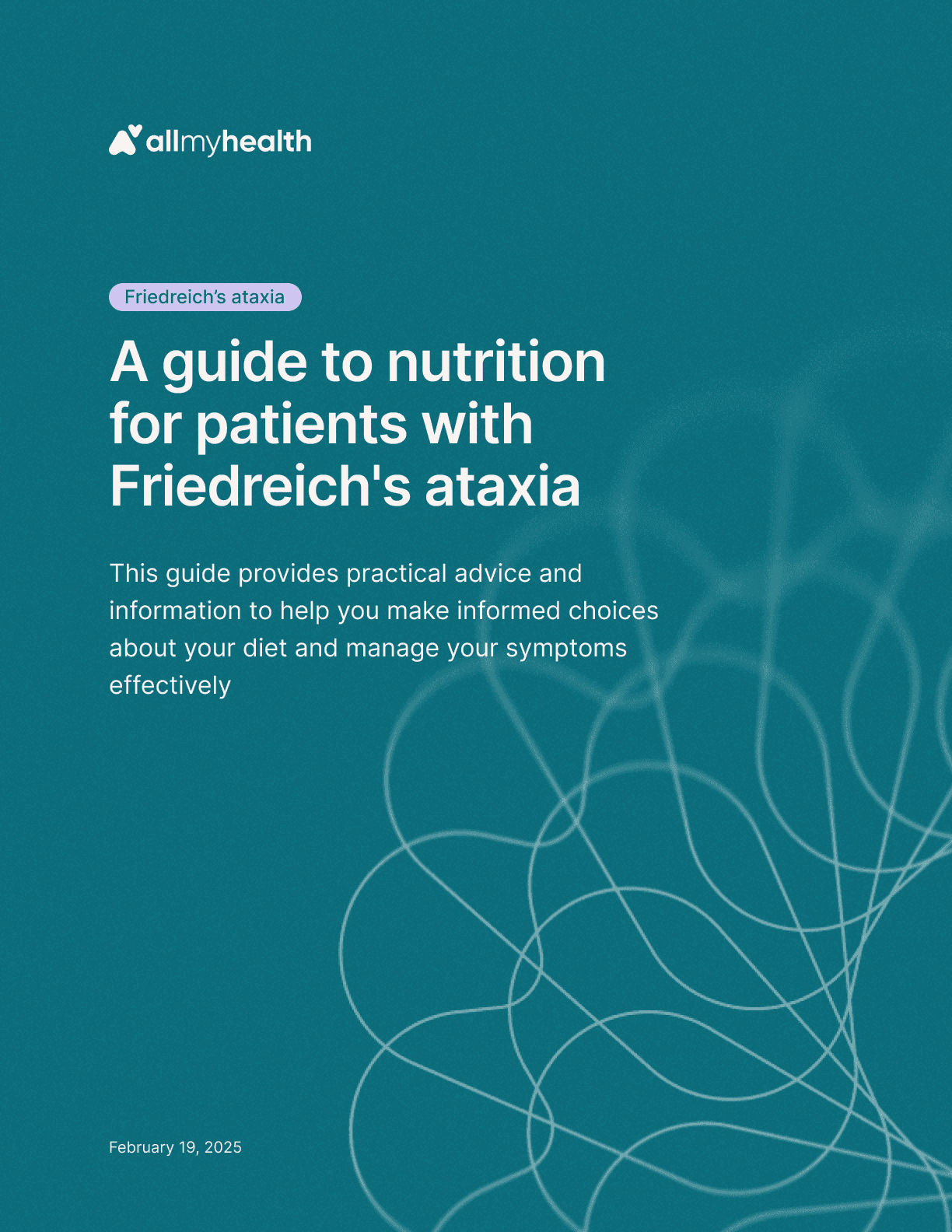
Friedreich's ataxia
·
A guide to nutrition for patients with Friedreich's ataxia
Feb 19, 2025
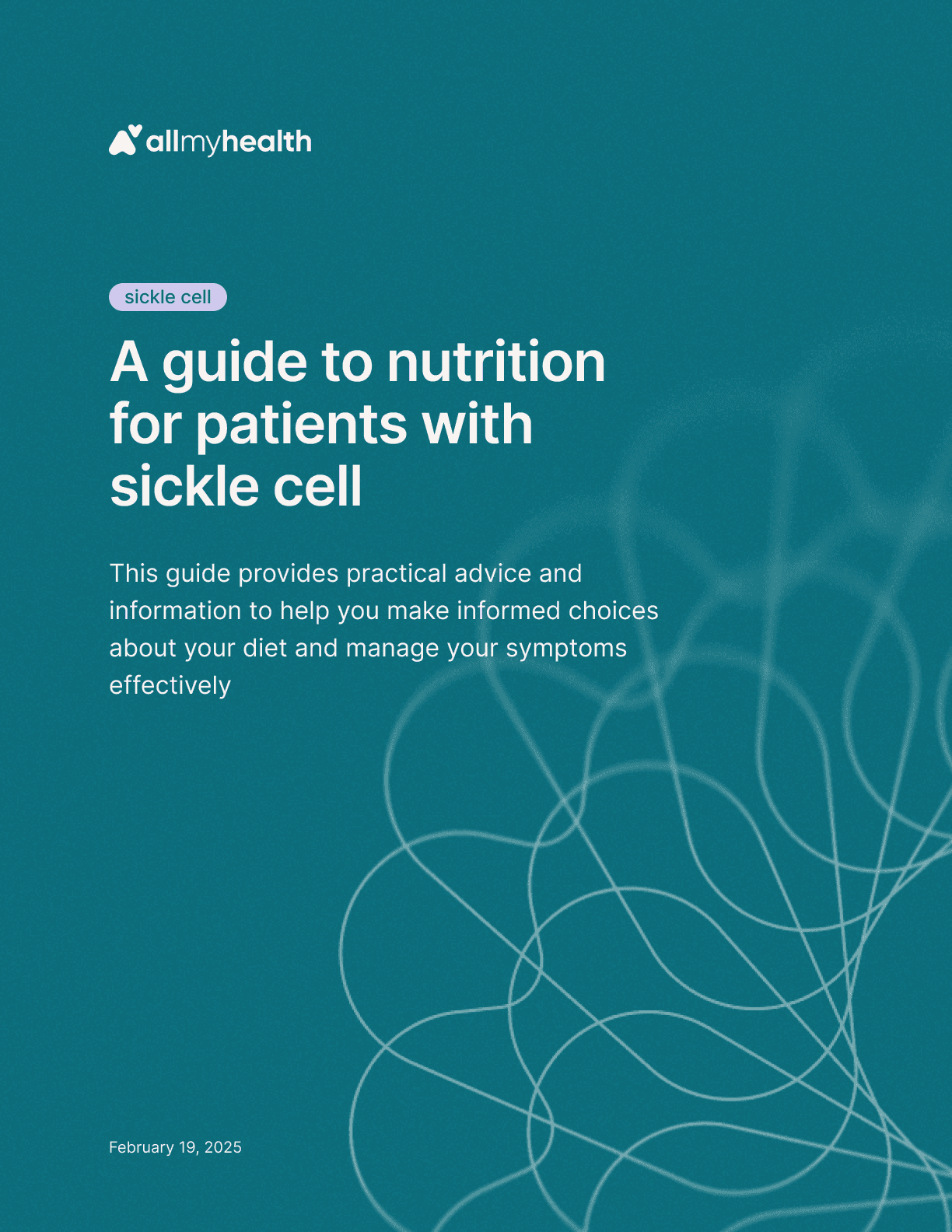
Sickle cell
·
A guide to nutrition for patients with sickle cell
Feb 19, 2025

Mantle cell lymphoma
·
A guide to nutrition for patients with mantle cell lymphoma
Feb 19, 2025
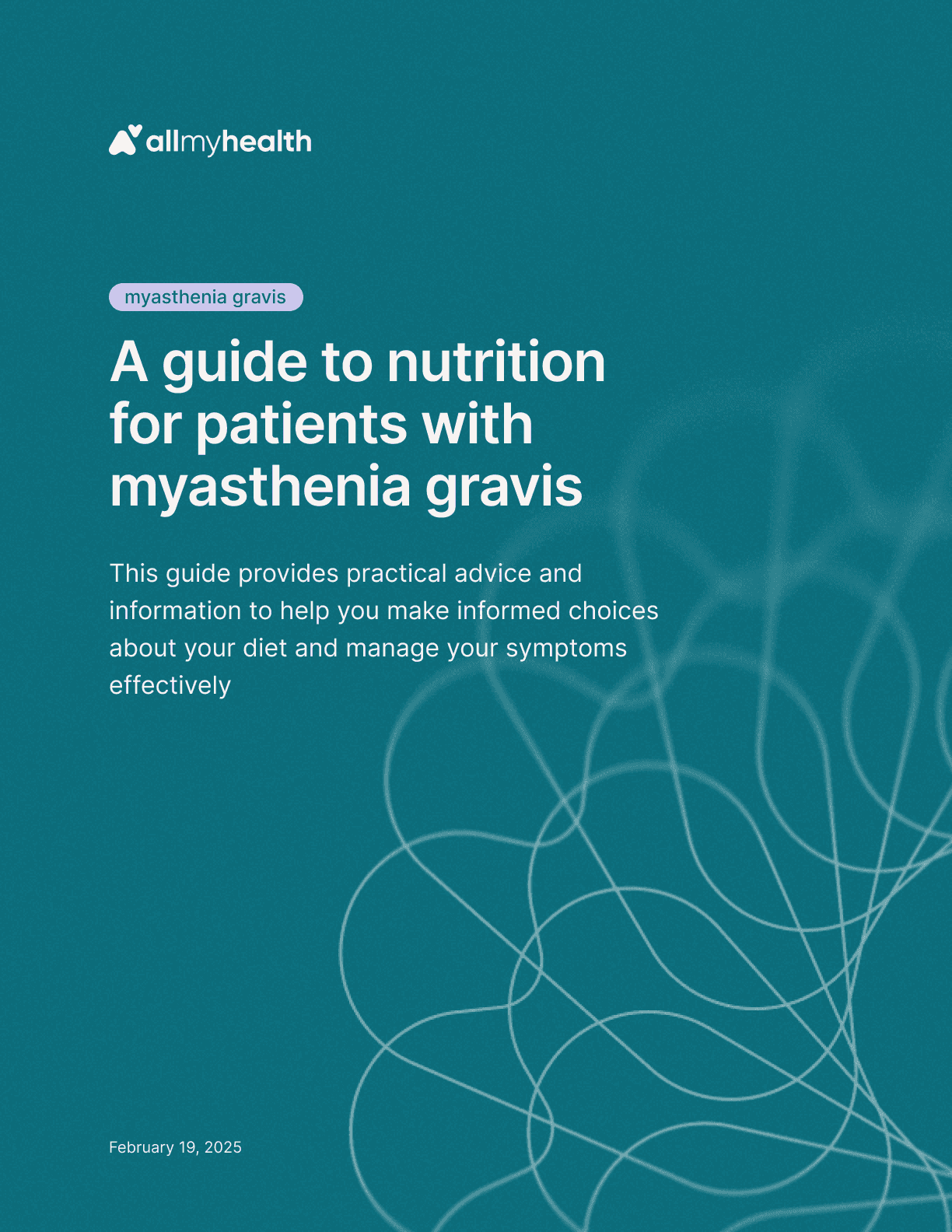
Myasthenia gravis
·
A guide to nutrition for patients with myasthenia gravis
Feb 19, 2025
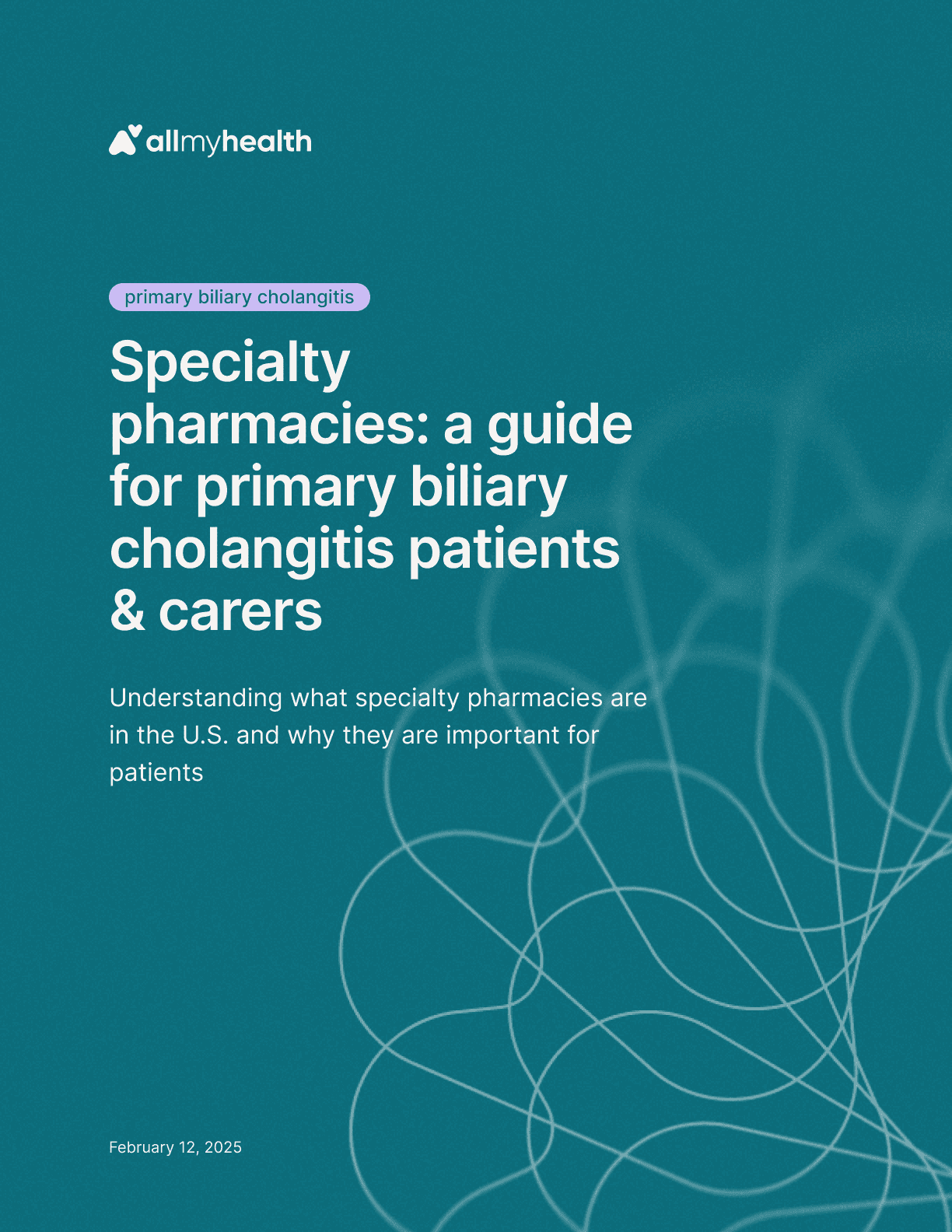
Primary biliary cholangitis
·
Specialty pharmacies: a guide for primary biliary cholangitis patients & carers
Feb 12, 2025
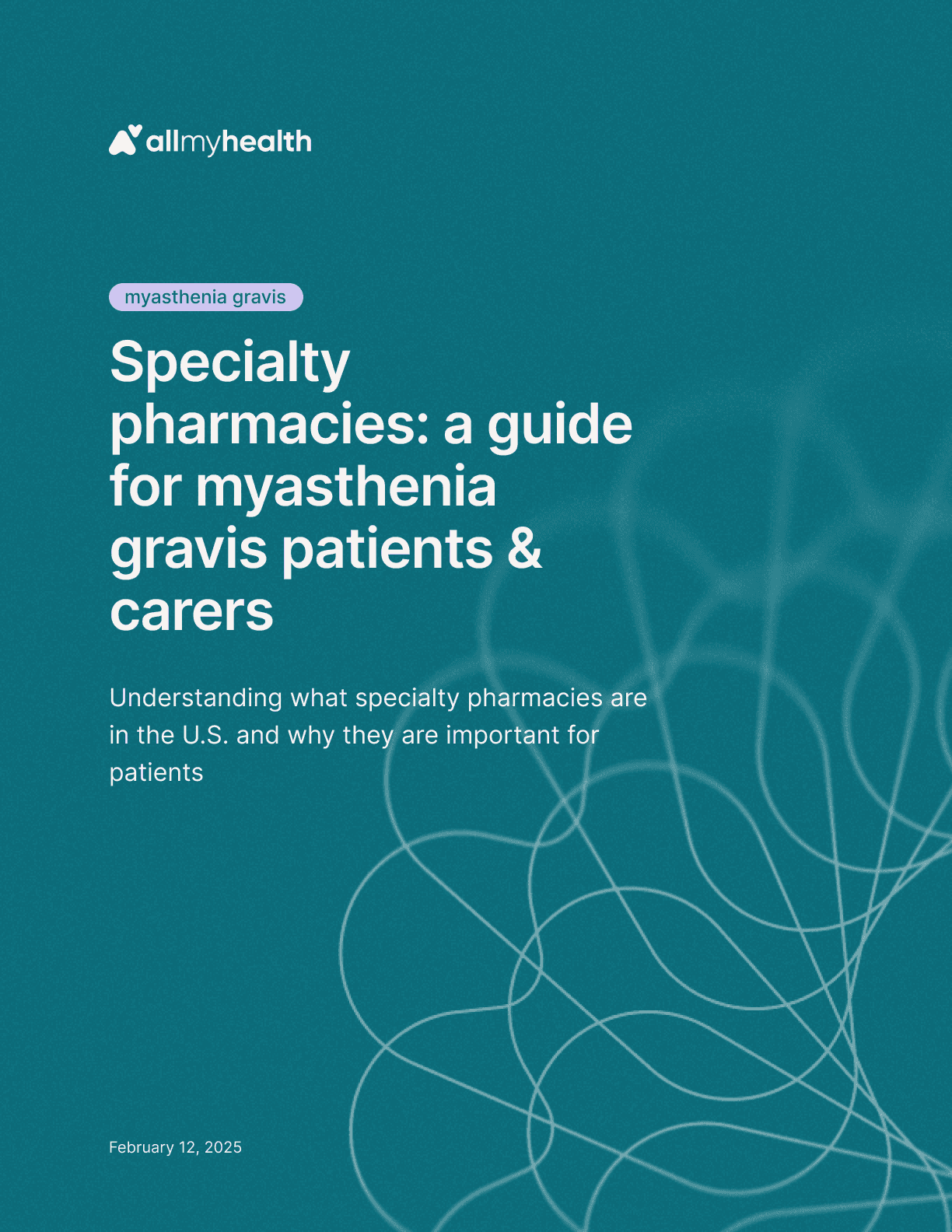
Myasthenia gravis
·
Specialty pharmacies: a guide for myasthenia gravis patients & carers
Feb 12, 2025
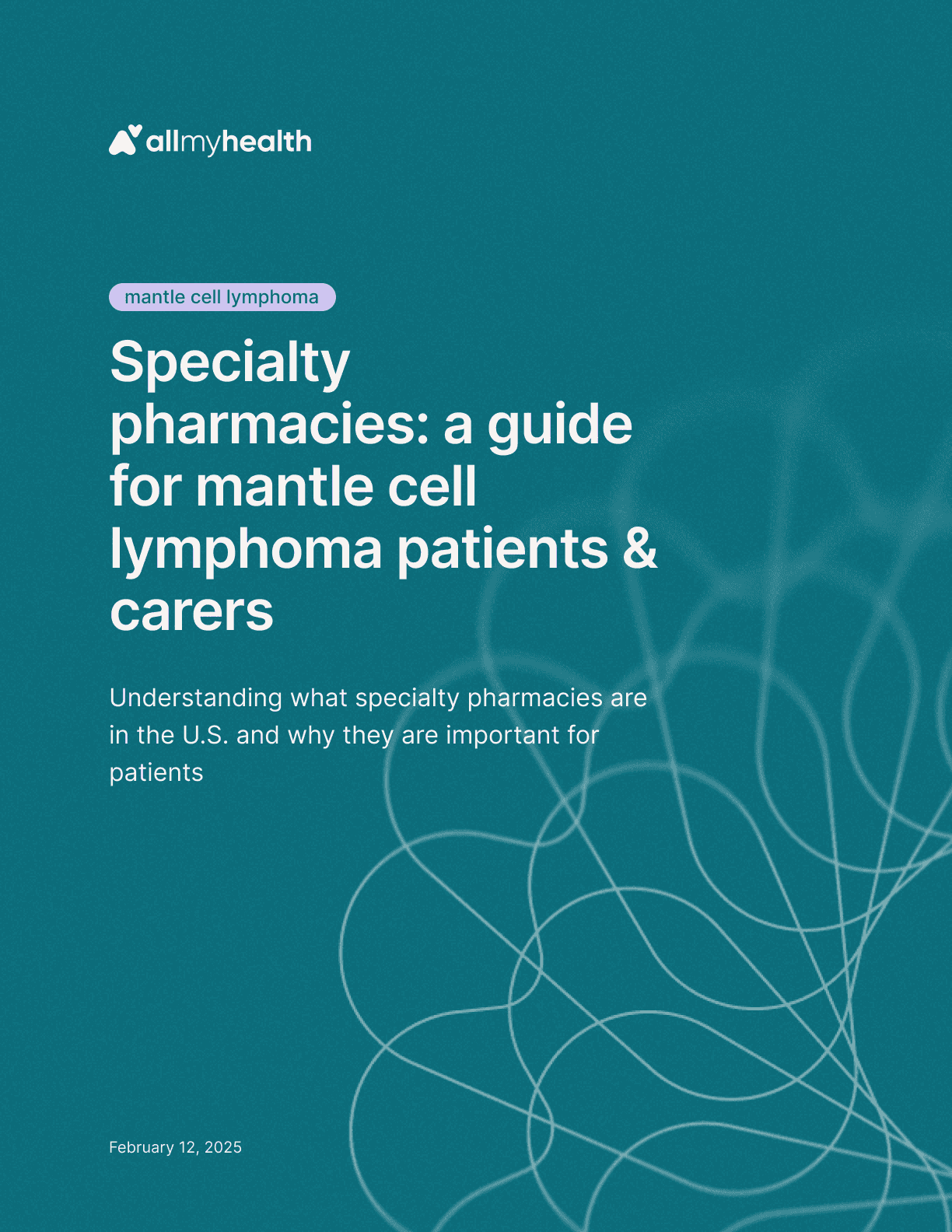
Mantle cell lymphoma
·
Specialty pharmacies: a guide for mantle cell lymphoma patients & carers
Feb 12, 2025
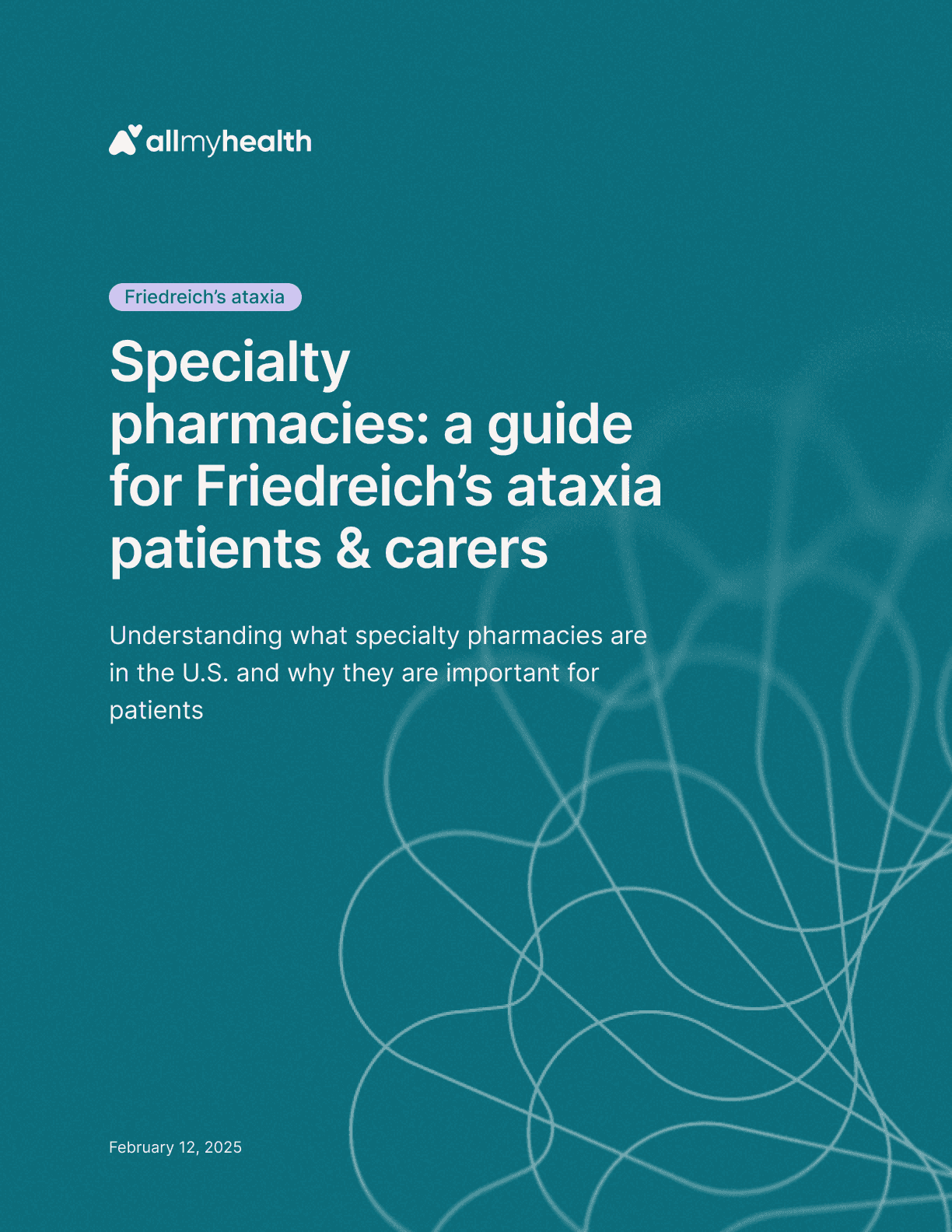
Friedreich's ataxia
·
Specialty pharmacies: a guide for Friedreich’s ataxia patients & carers
Feb 12, 2025
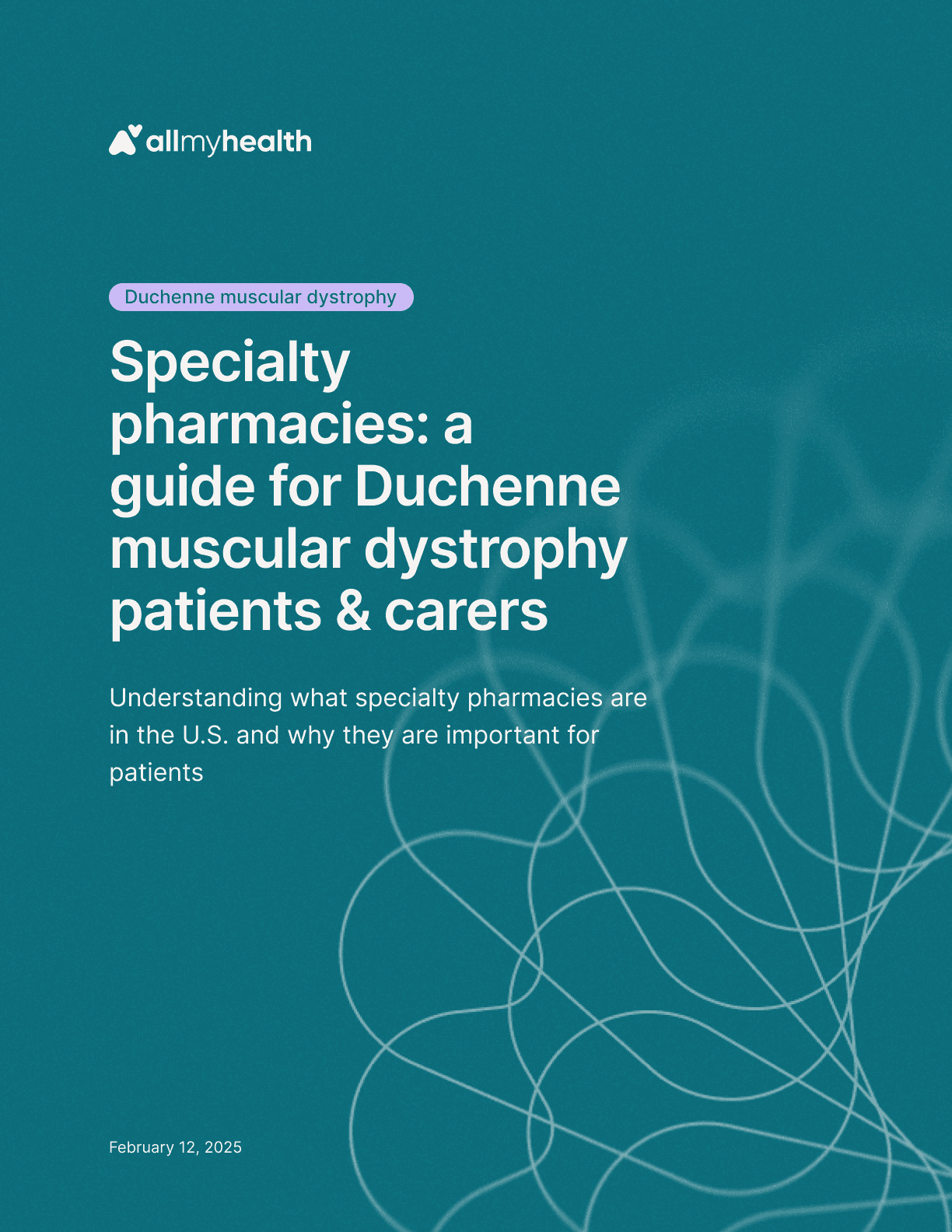
Duchenne muscular dystrophy
·
Specialty pharmacies: a guide for Duchenne muscular dystrophy patients & carers
Feb 12, 2025

Spinal muscular atrophy
·
Specialty pharmacies: a guide for SMA patients & carers
Feb 6, 2025
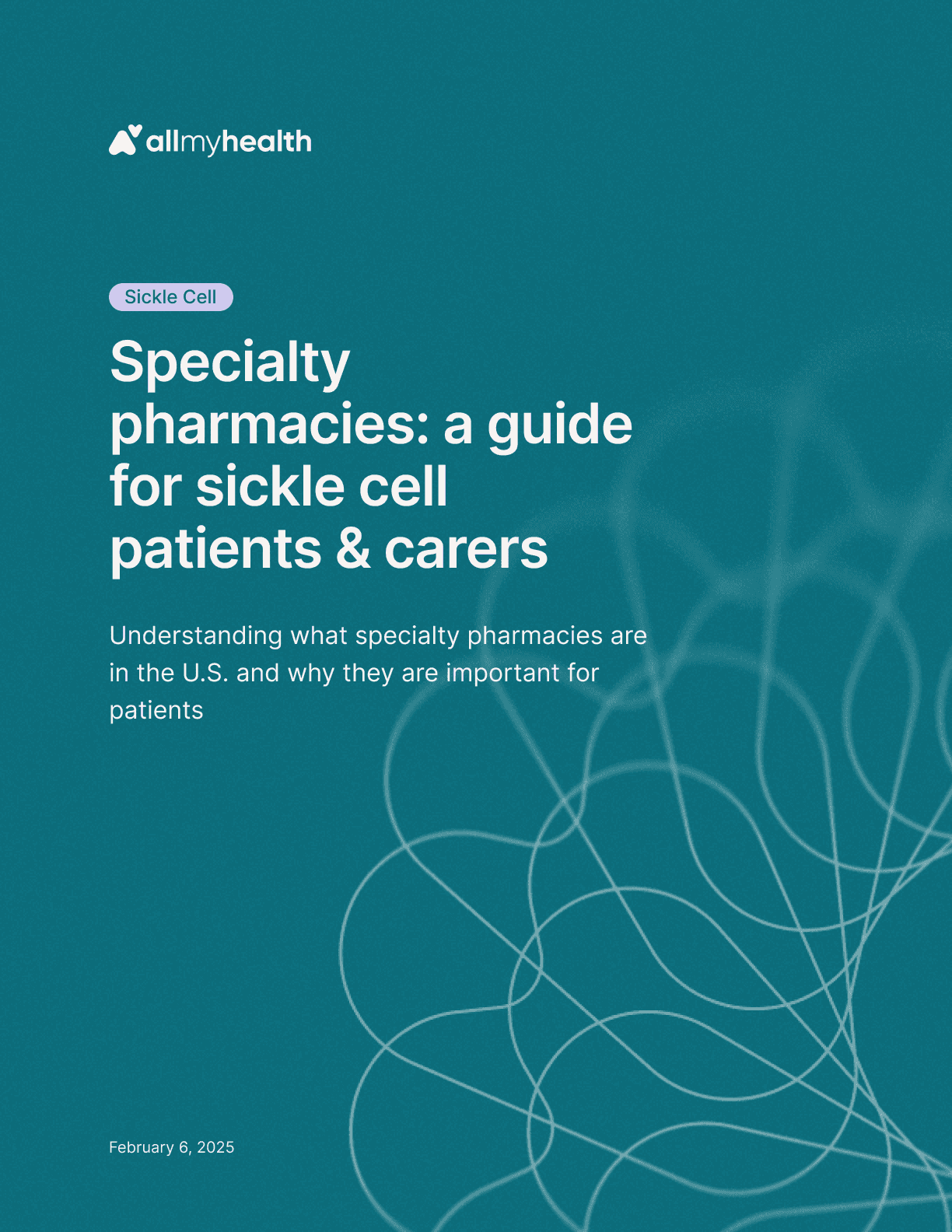
Sickle cell
·
Specialty pharmacies: a guide for sickle cell patients & carers
Feb 6, 2025
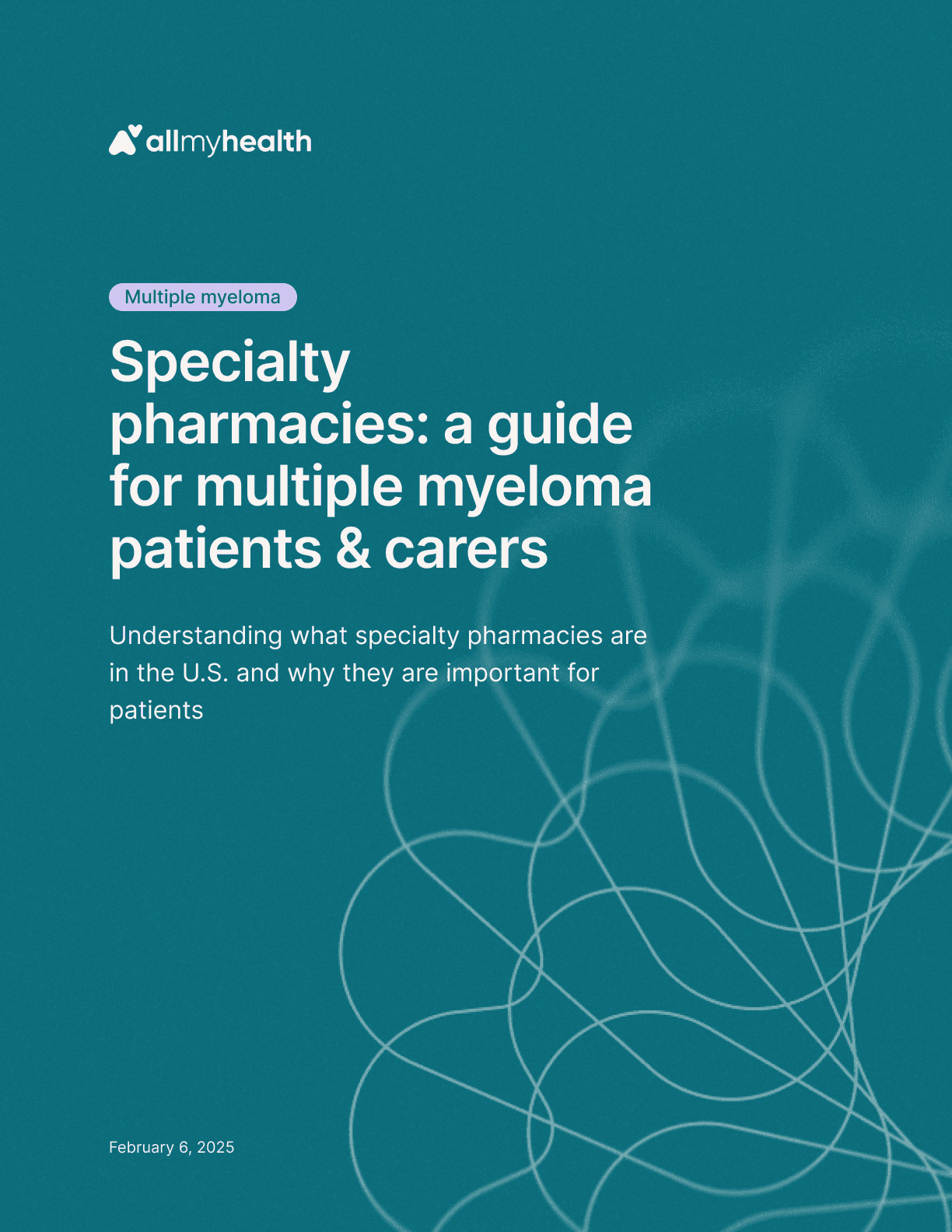
Multiple myeloma
·
Specialty pharmacies: a guide for multiple myeloma patients & carers
Feb 6, 2025
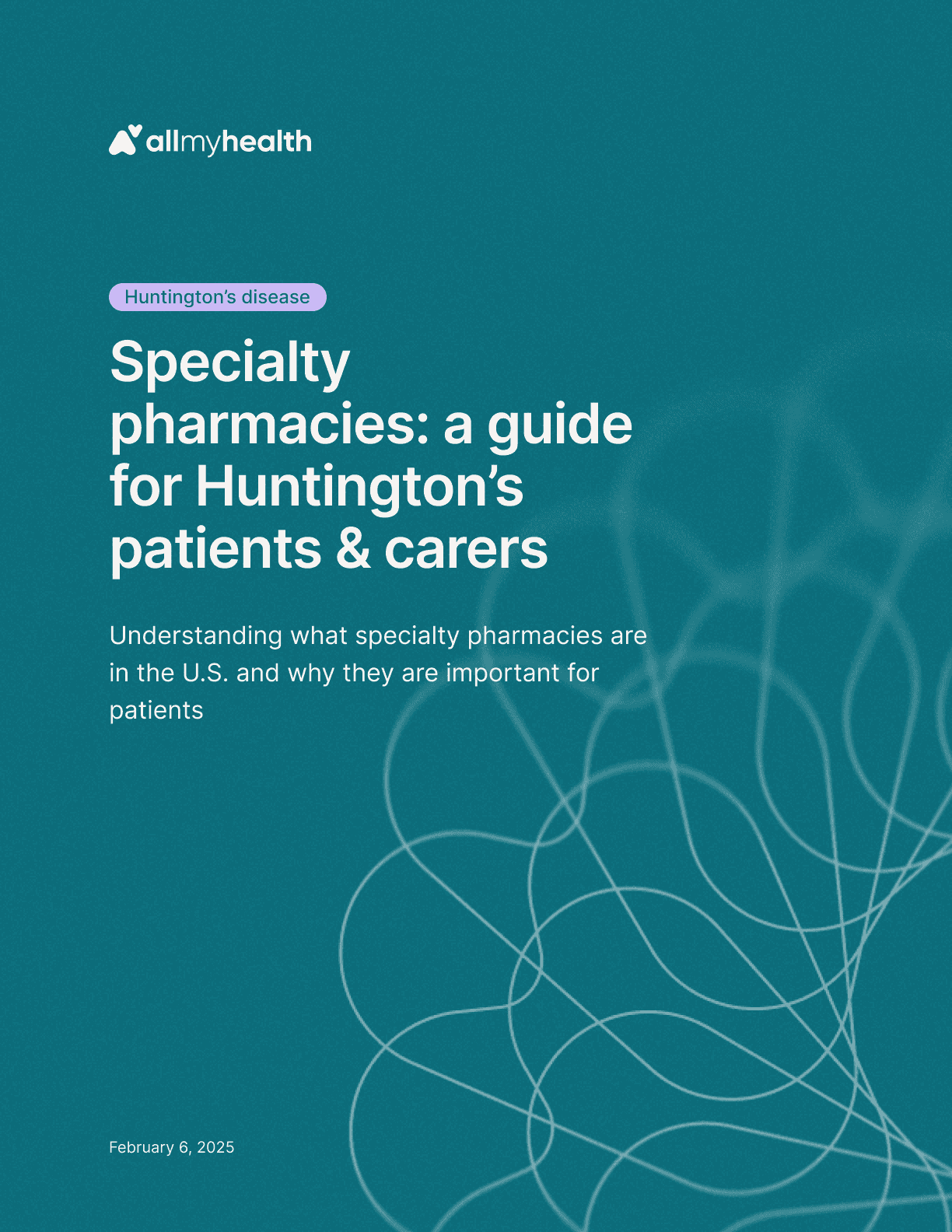
Huntington's disease
·
Specialty pharmacies: a guide for Huntington’s disease patients & carers
Feb 6, 2025
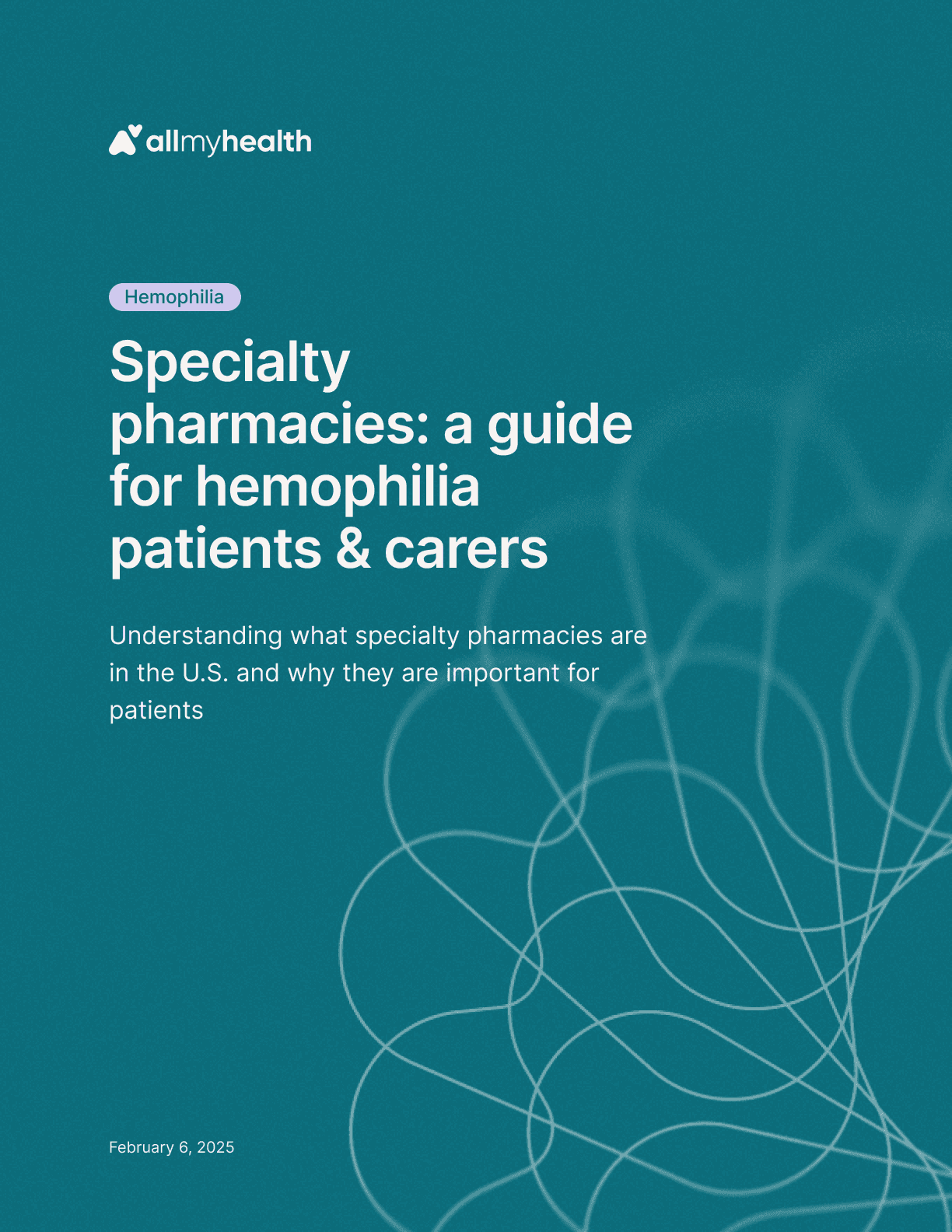
Hemophilia
·
Specialty pharmacies: a guide for hemophilia patients & carers
Feb 6, 2025

Amyotrophic lateral sclerosis
·
Specialty pharmacies: a guide for ALS patients & carers
Feb 6, 2025
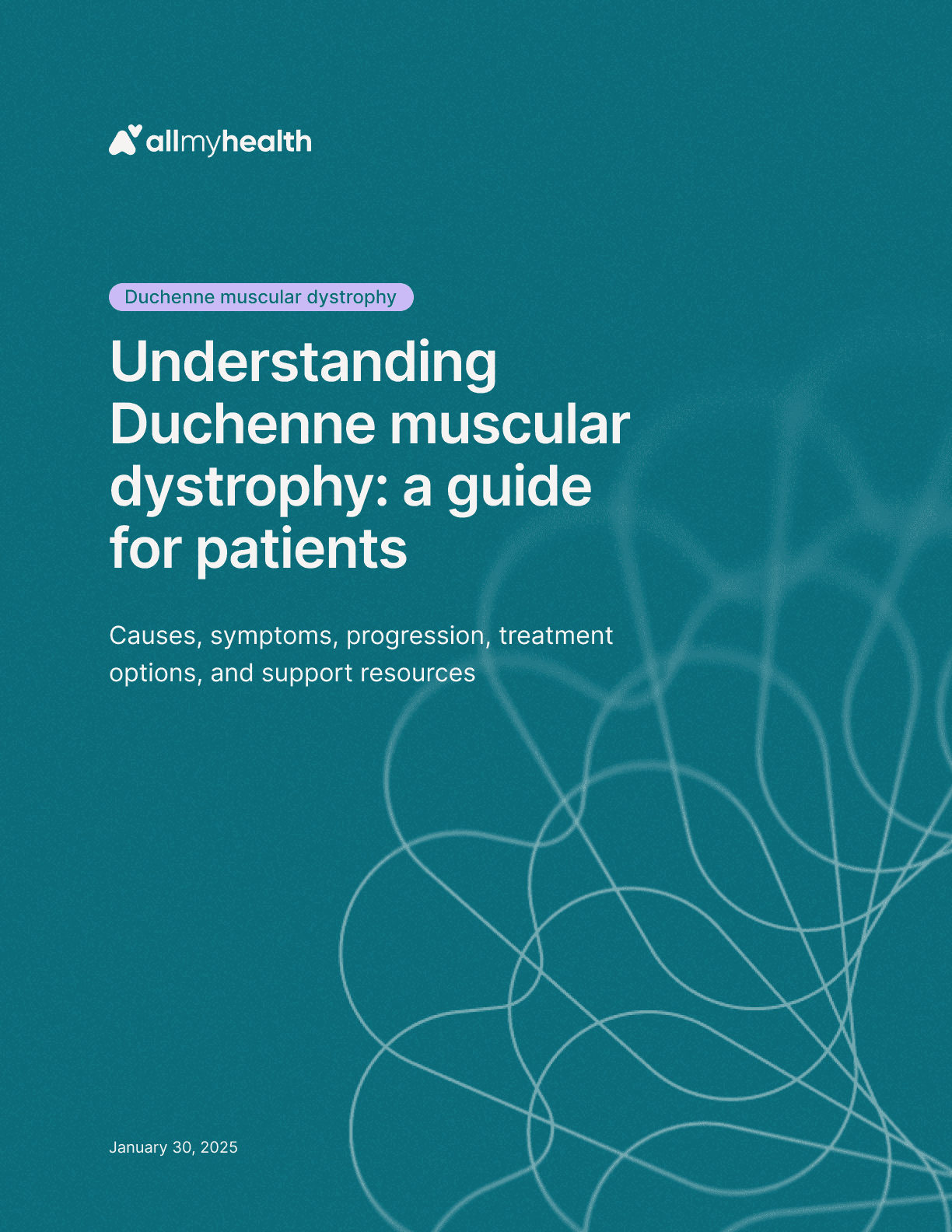
Duchenne muscular dystrophy
·
Understanding Duchenne muscular dystrophy: a guide for patients
Jan 30, 2025
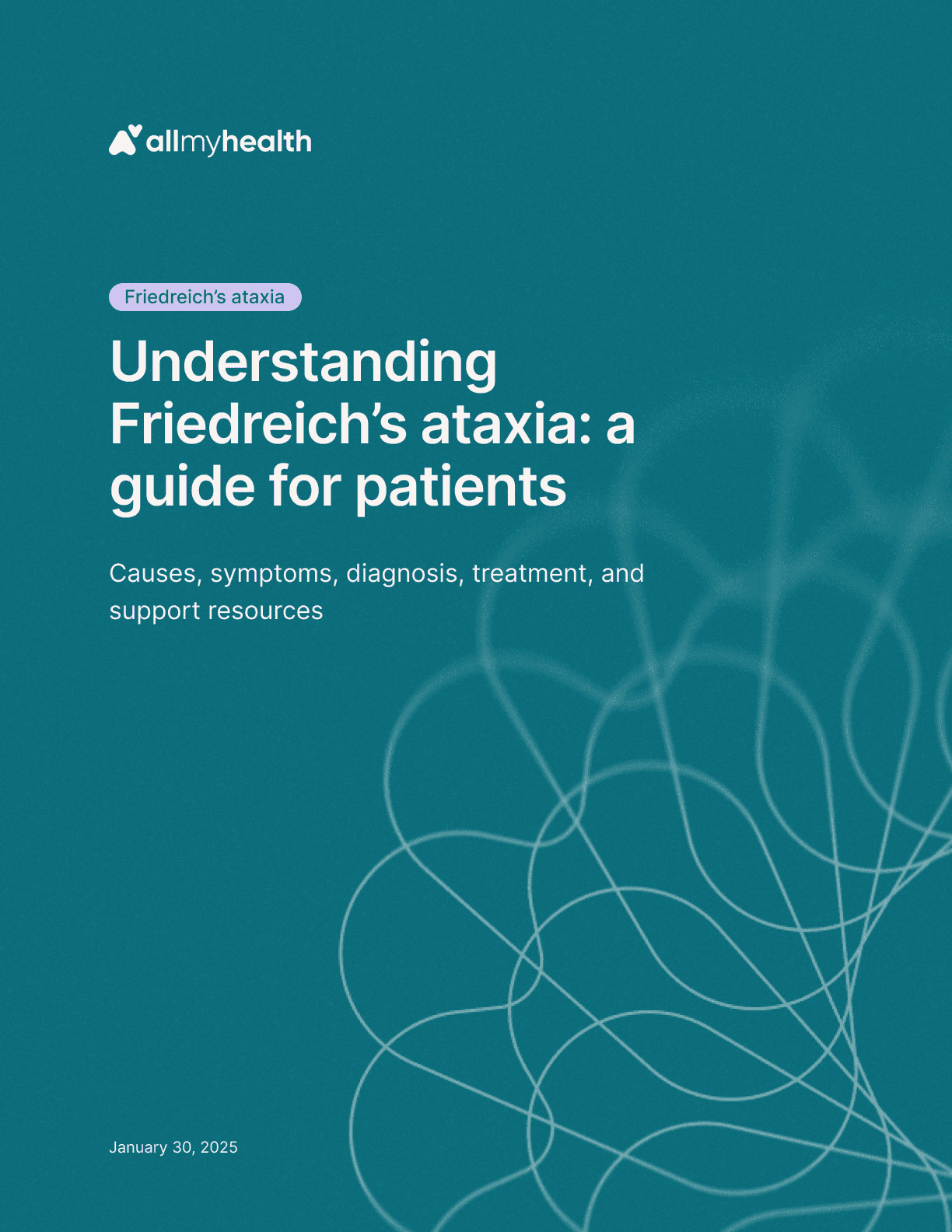
Friedreich's ataxia
·
Understanding Friedreich's ataxia: a guide for patients
Jan 30, 2025

Hemophilia
·
Understanding hemophilia: a guide for patients
Jan 30, 2025
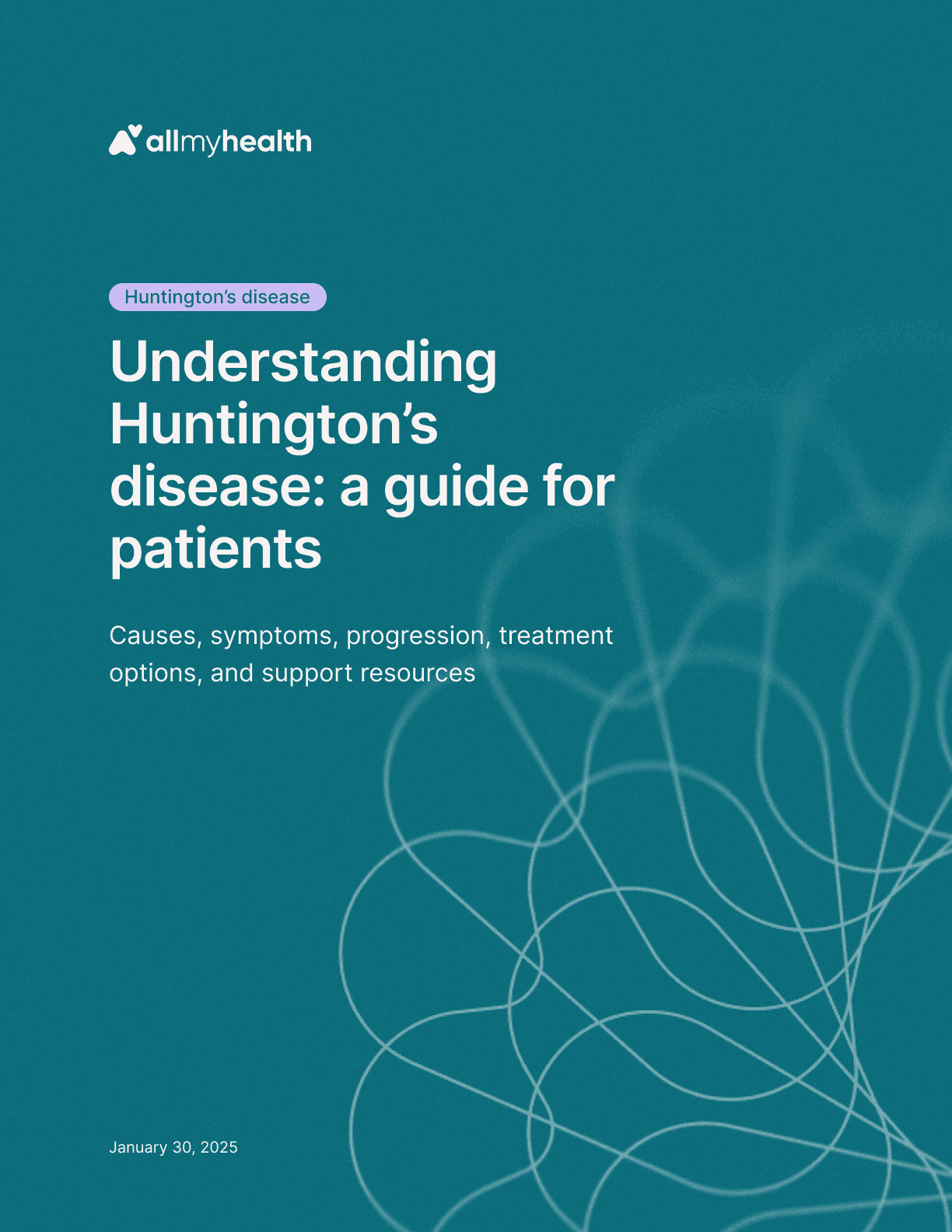
Huntington's disease
·
Understanding Huntington’s disease: a guide for patients
Jan 30, 2025
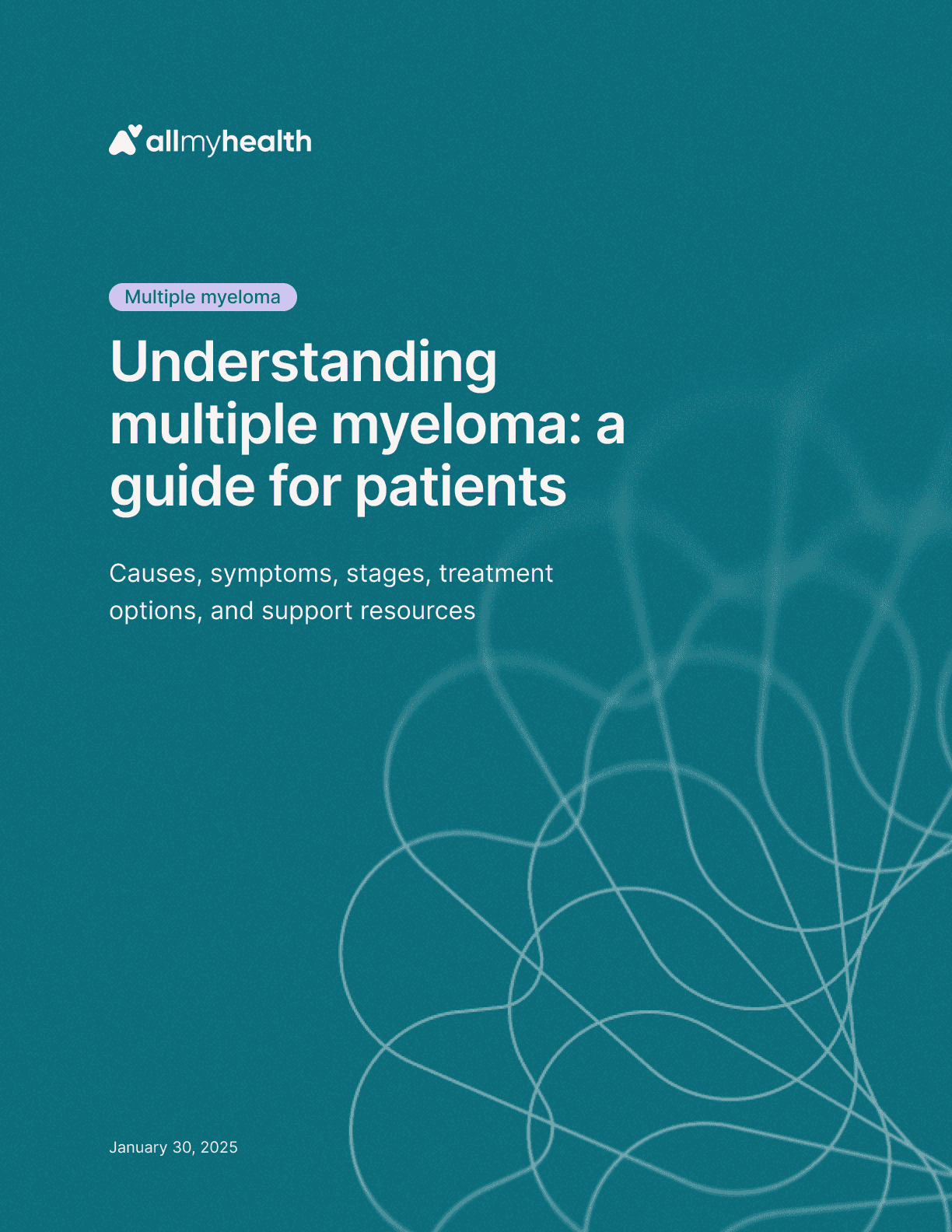
Multiple myeloma
·
Understanding multiple myeloma: a guide for patients
Jan 30, 2025

Primary biliary cholangitis
·
Understanding primary biliary cholangitis: a guide for patients
Jan 30, 2025
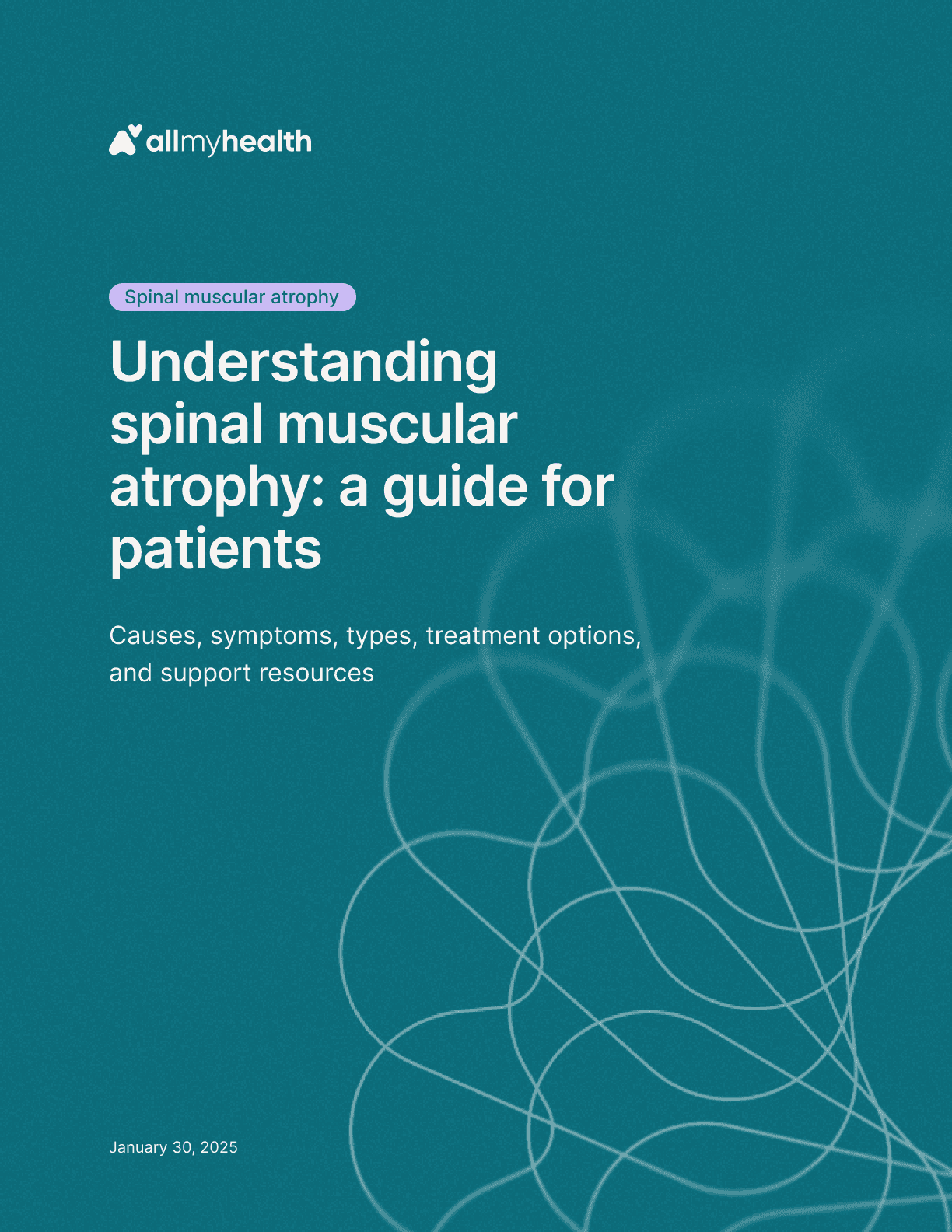
Spinal muscular atrophy
·
Understanding spinal muscular atrophy: a guide for patients
Jan 30, 2025

Amyotrophic lateral sclerosis
·
Understanding amyotrophic lateral sclerosis: a guide for patients
Jan 23, 2025
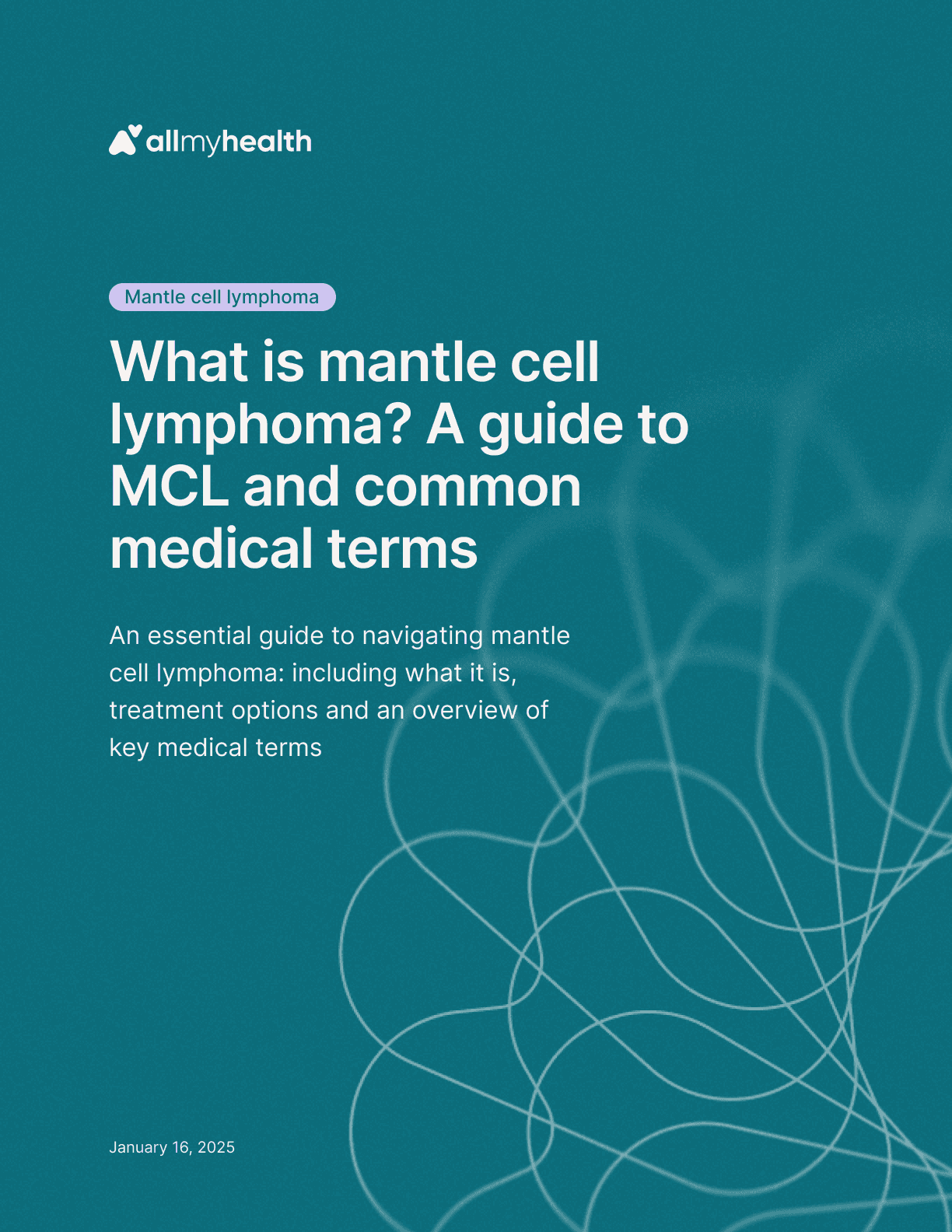
Mantle cell lymphoma
·
What is mantle cell lymphoma? A guide to MCL and common medical terms
Jan 23, 2025
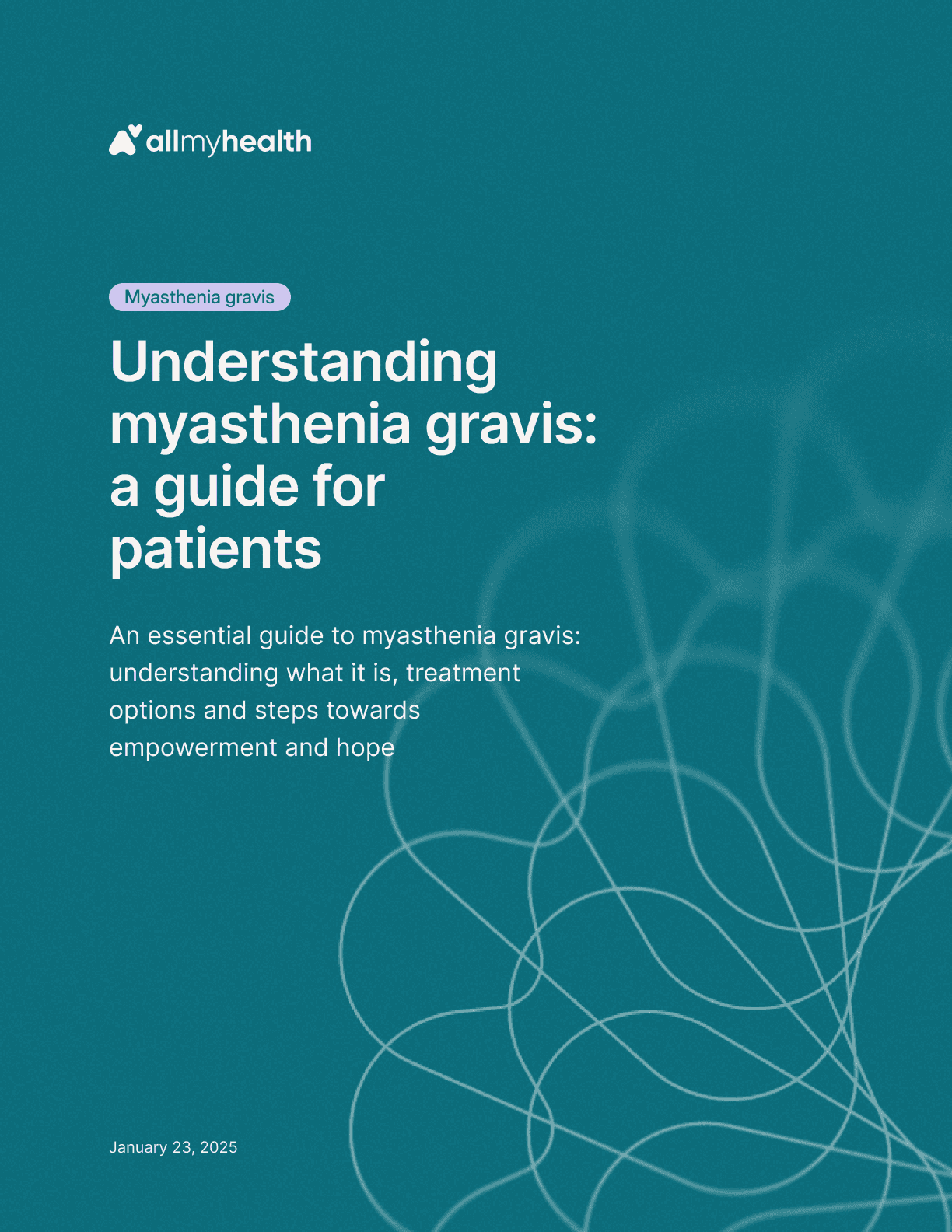
Myasthenia gravis
·
Understanding myasthenia gravis: a guide for patients
Jan 23, 2025
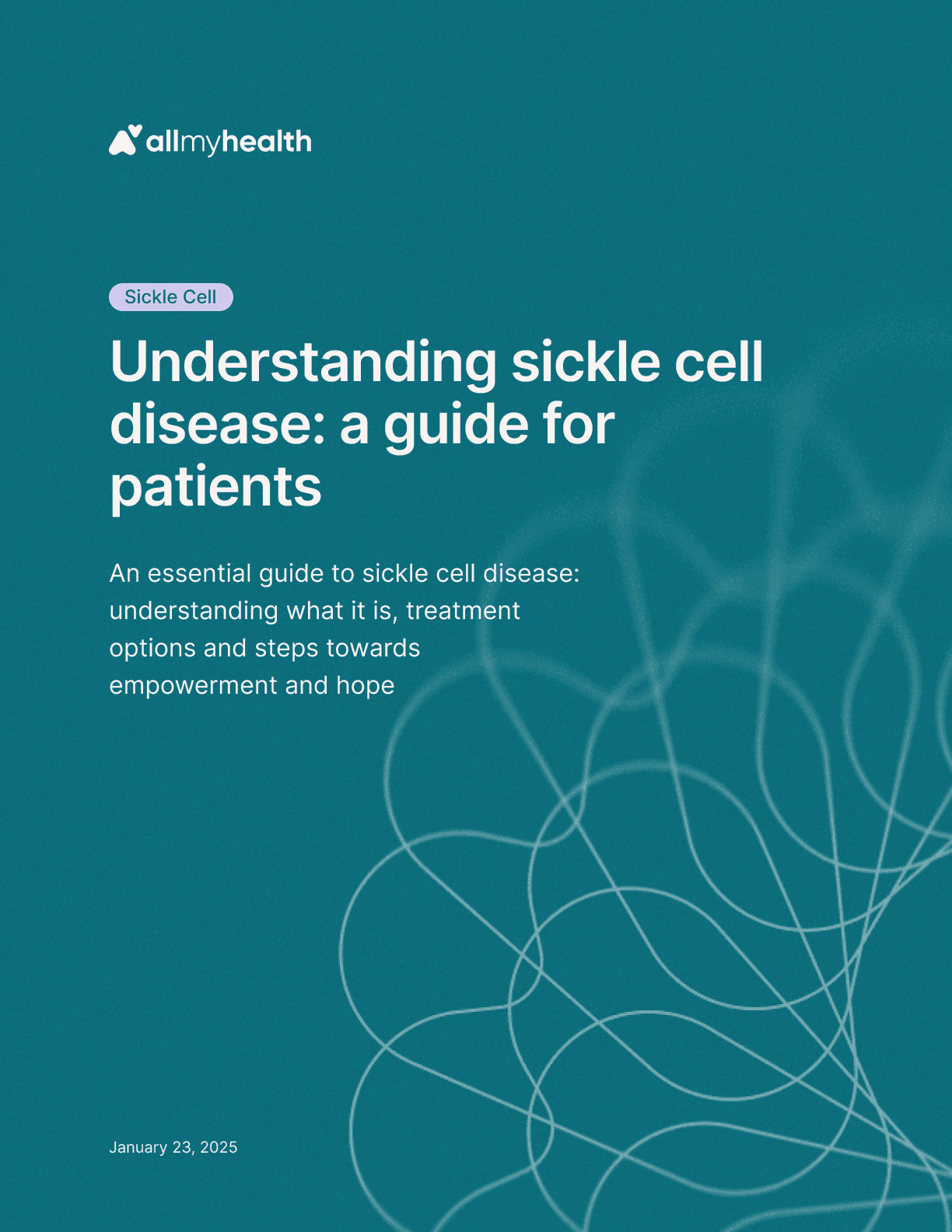
Sickle cell
·
Understanding sickle cell disease: a guide for patients
Jan 23, 2025
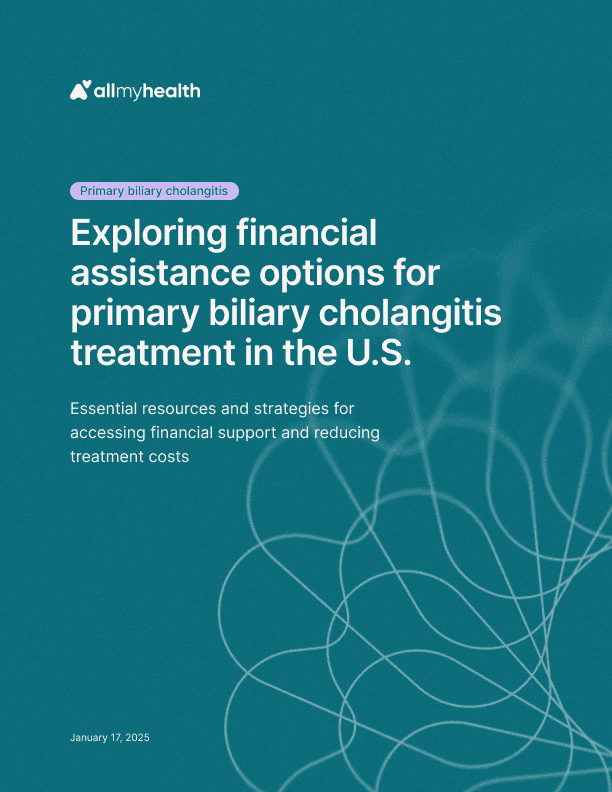
Primary biliary cholangitis
·
Exploring financial assistance options for primary biliary cholangitis treatment in the U.S.
Jan 17, 2025
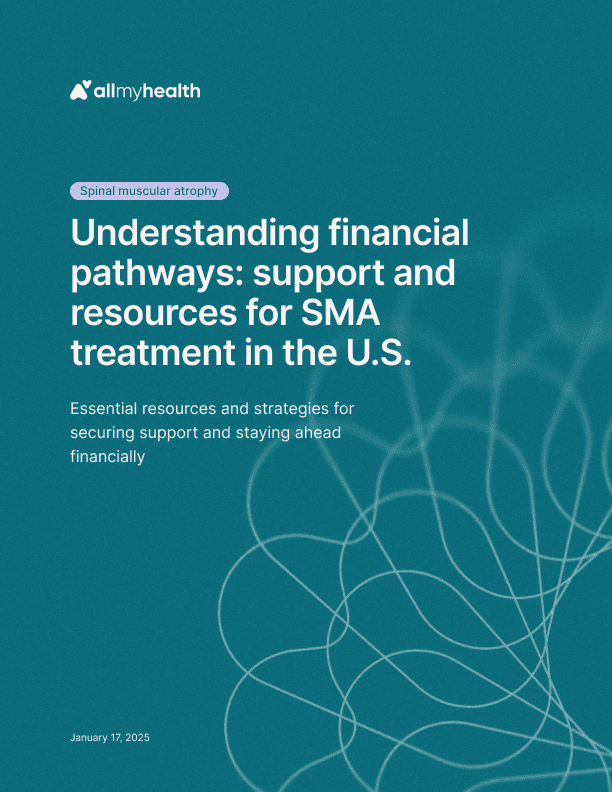
Spinal muscular atrophy
·
Understanding financial pathways: support and resources for SMA treatment in the U.S.
Jan 17, 2025
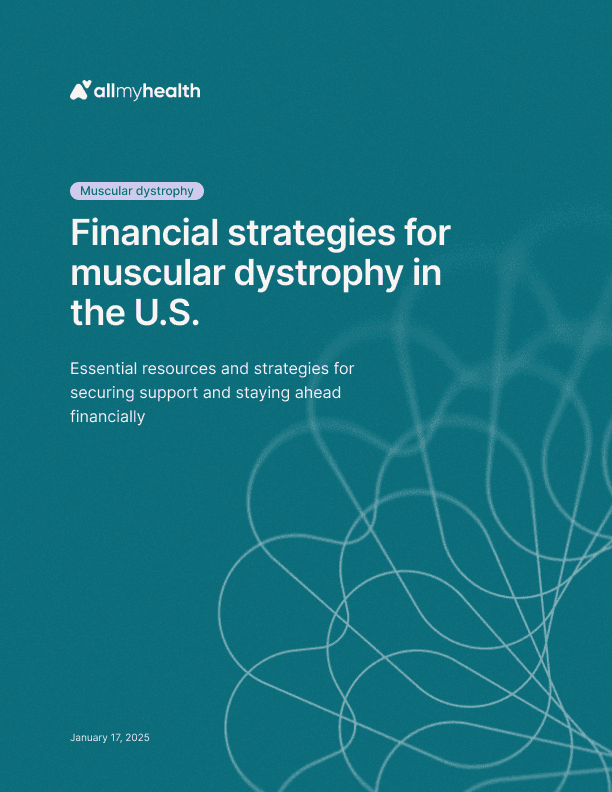
Duchenne muscular dystrophy
·
Financial strategies for muscular dystrophy in the U.S.
Jan 17, 2025

Hemophilia
·
Navigating financial assistance for hemophilia treatment in the U.S.
Jan 17, 2025
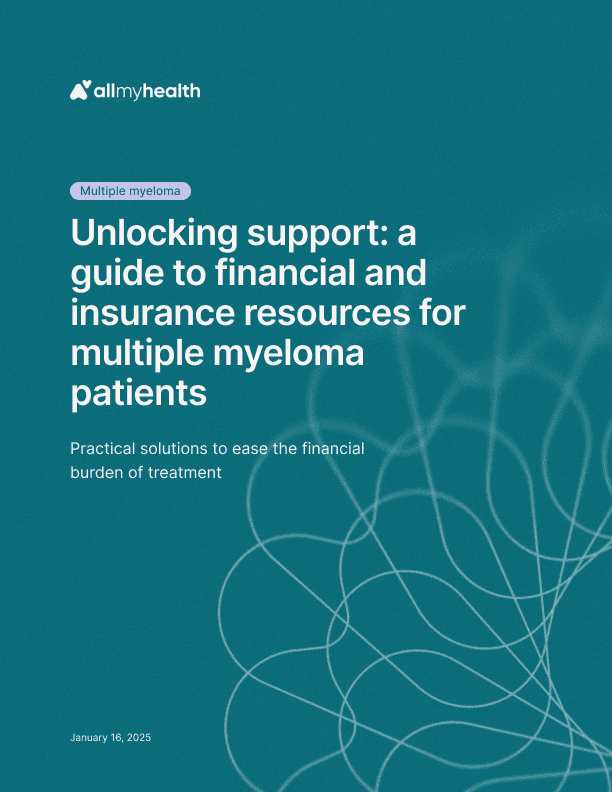
Multiple myeloma
·
Unlocking support: a guide to financial and insurance resources for multiple myeloma patients
Jan 17, 2025

Friedreich's ataxia
·
Navigating Friedreich’s ataxia in the U.S.: a practical guide to support and financial planning
Jan 17, 2025
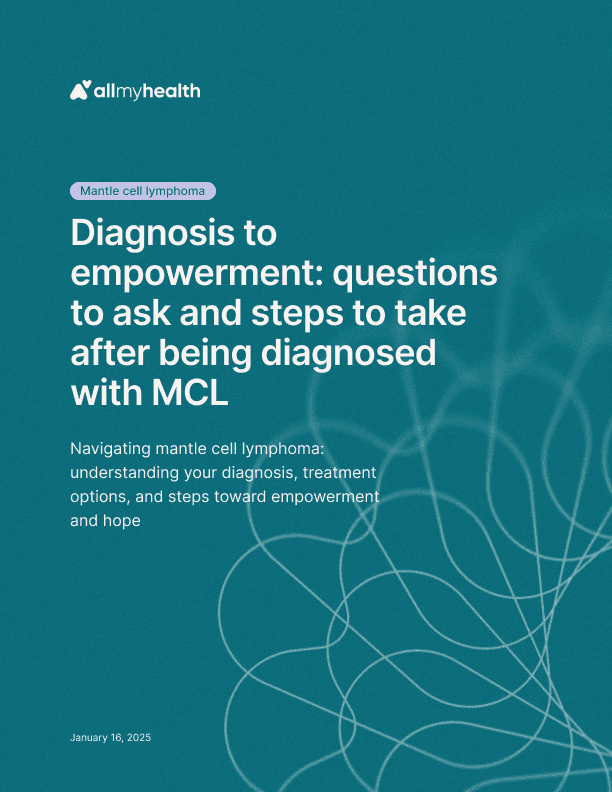
Mantle cell lymphoma
·
Diagnosis to empowerment: questions to ask and steps to take after being diagnosed with MCL
Jan 16, 2025
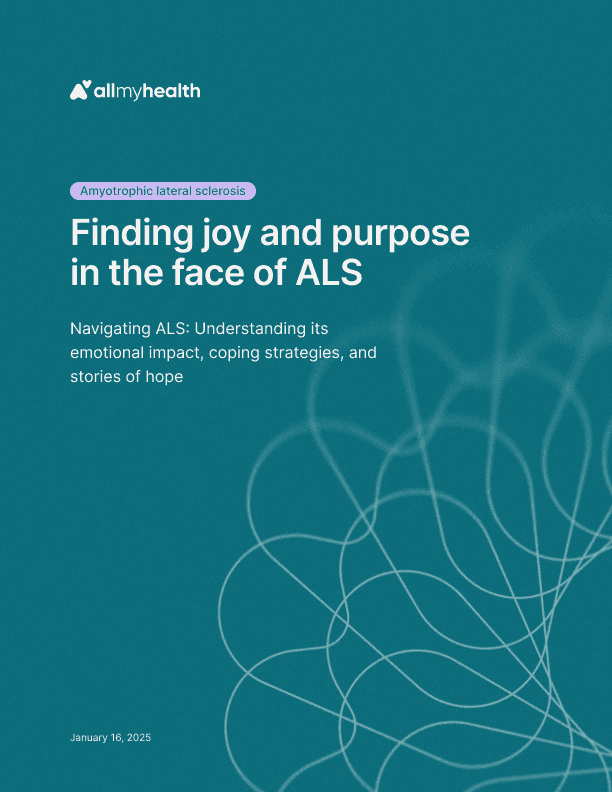
Amyotrophic lateral sclerosis
·
Finding joy and purpose in the face of ALS
Jan 16, 2025
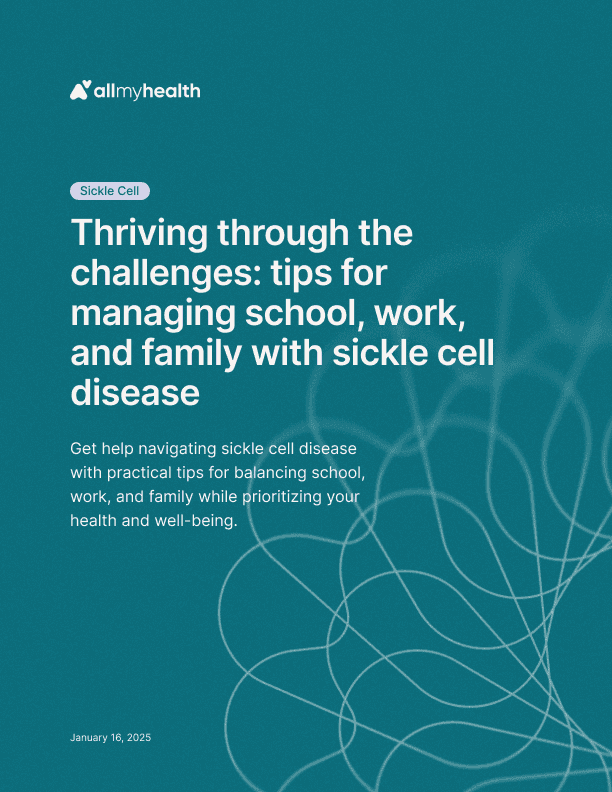
Sickle cell
·
Thriving through the challenges: tips for managing school, work, and family with sickle cell disease
Jan 16, 2025
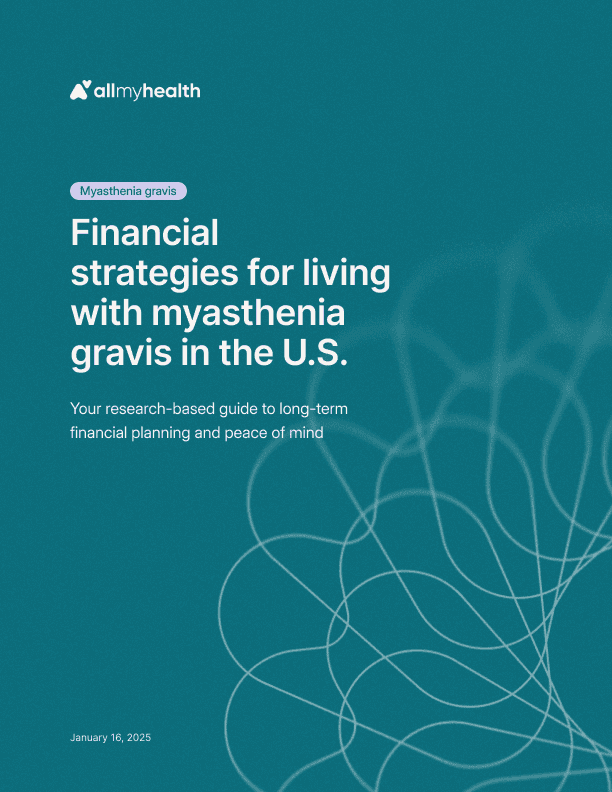
Myasthenia gravis
·
Financial strategies for living with myasthenia gravis in the U.S.: a guide to long-term planning
Jan 16, 2025